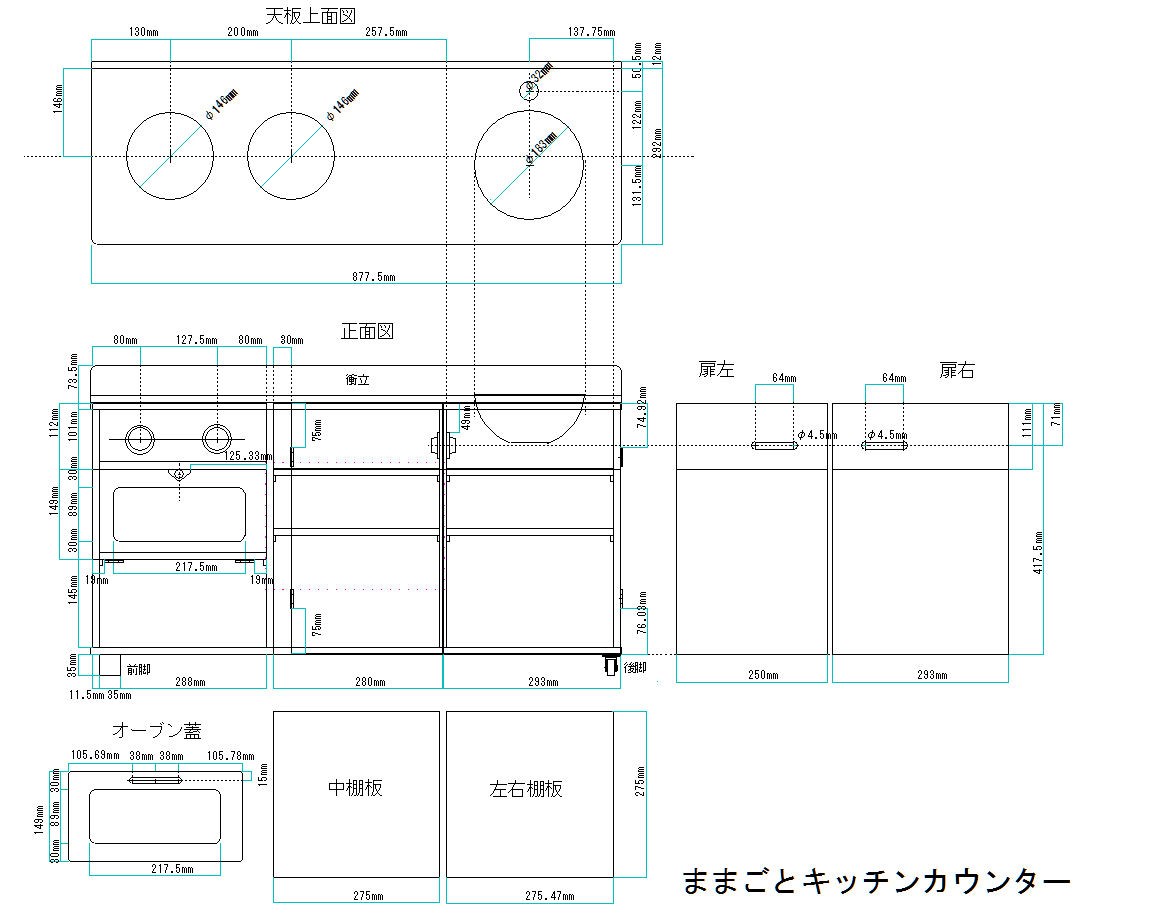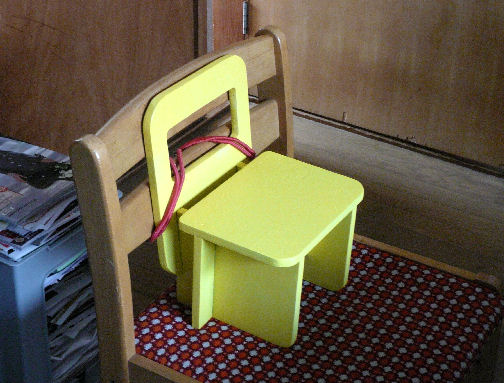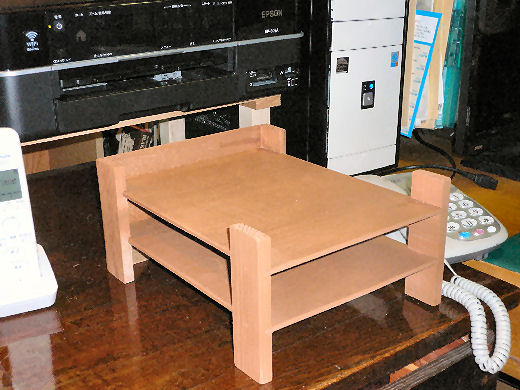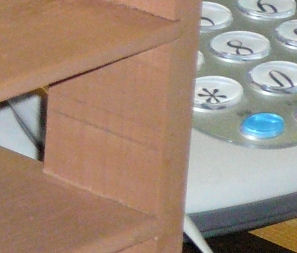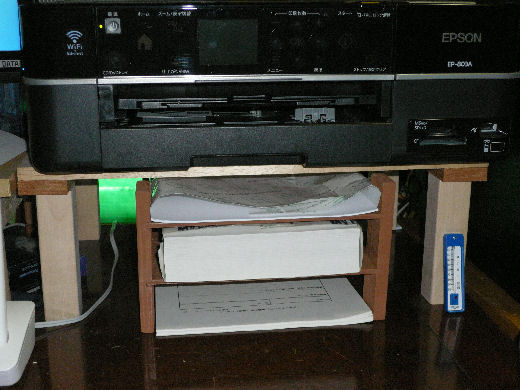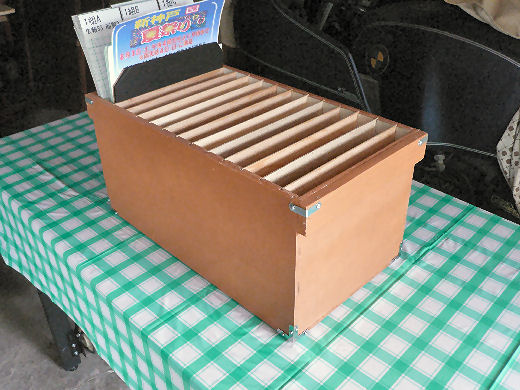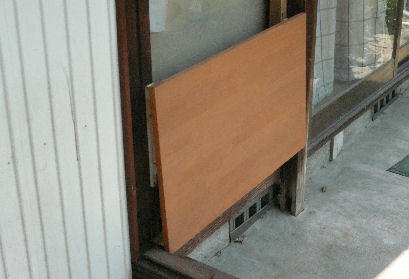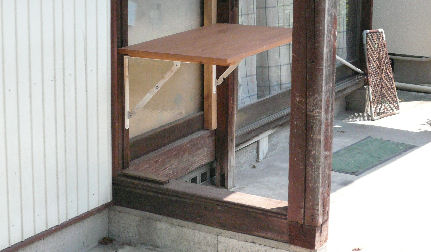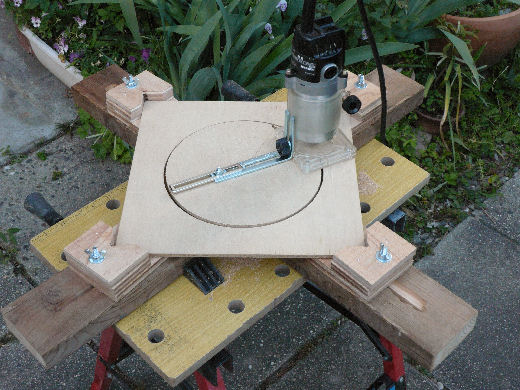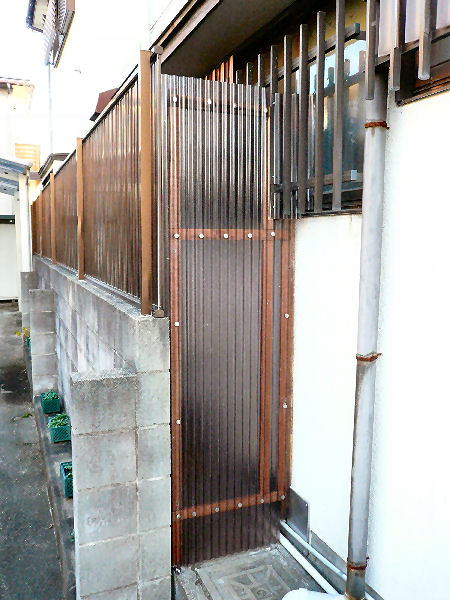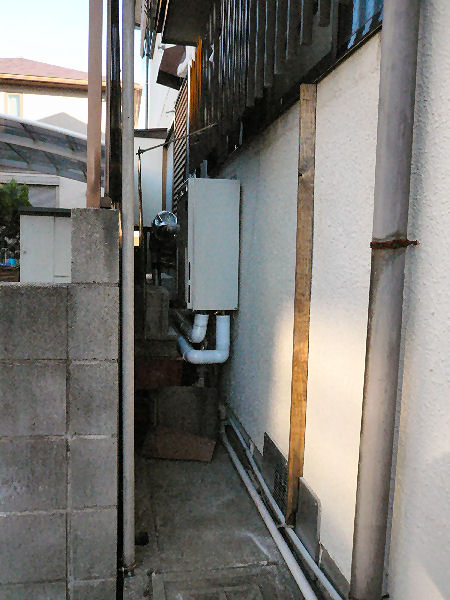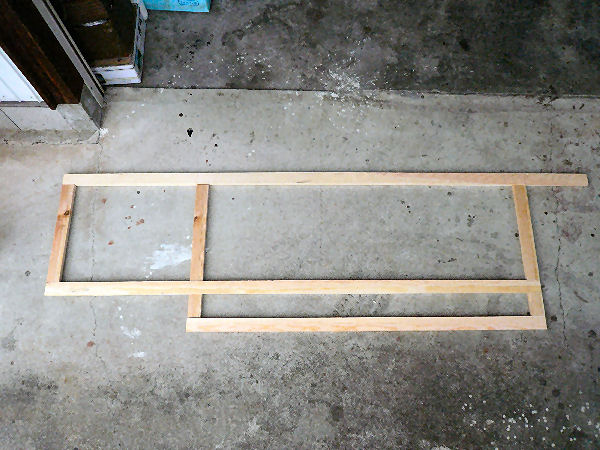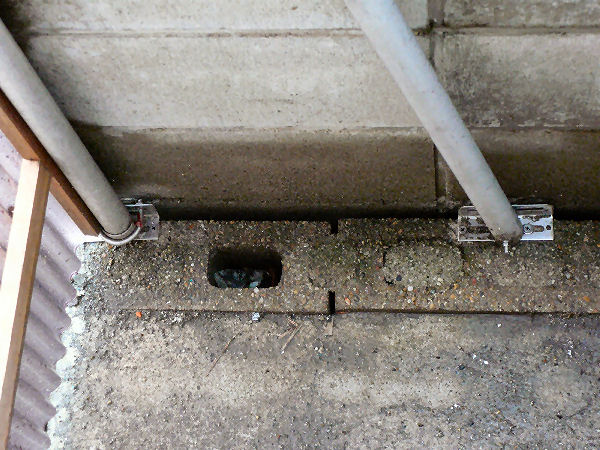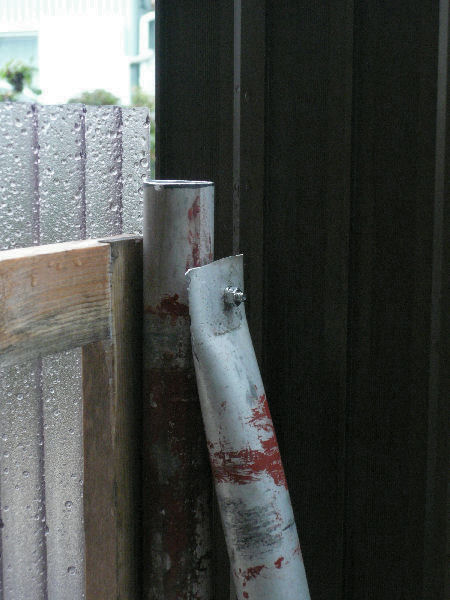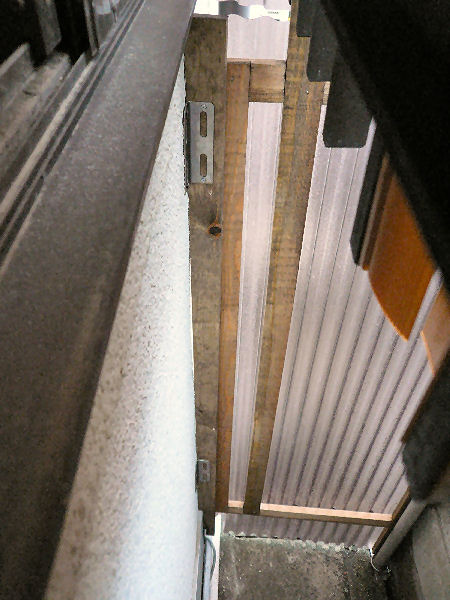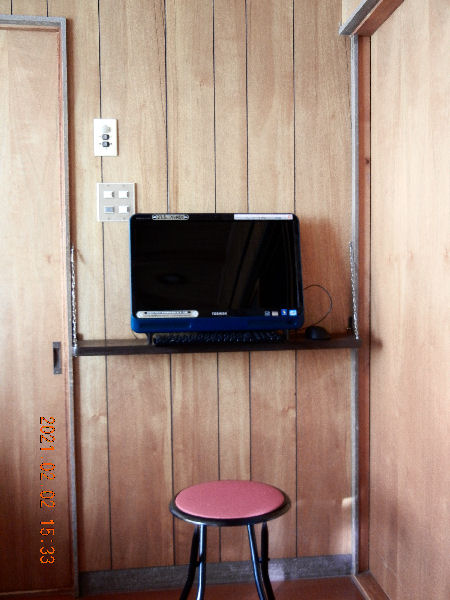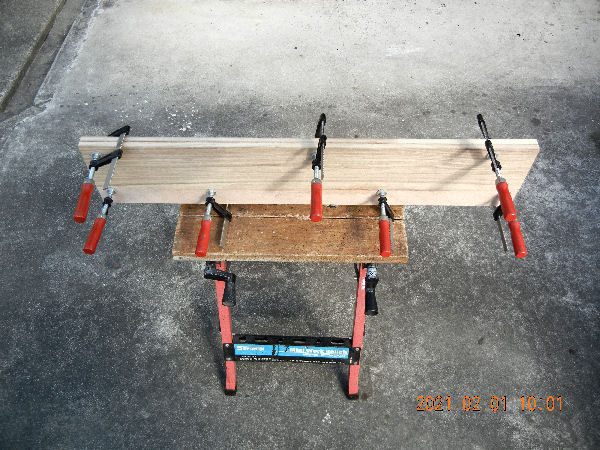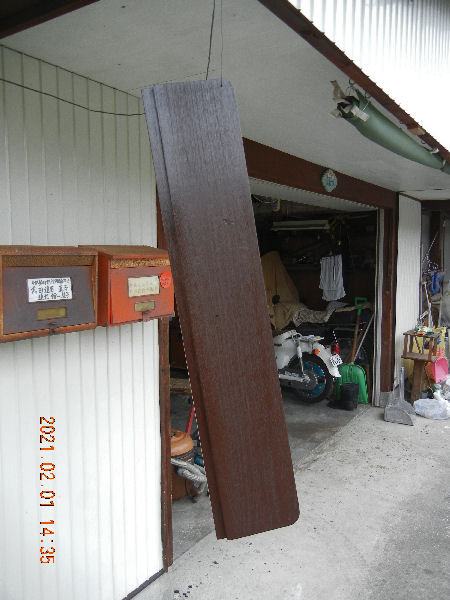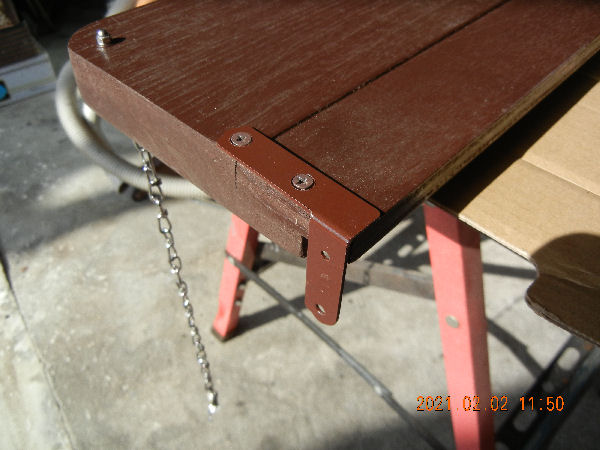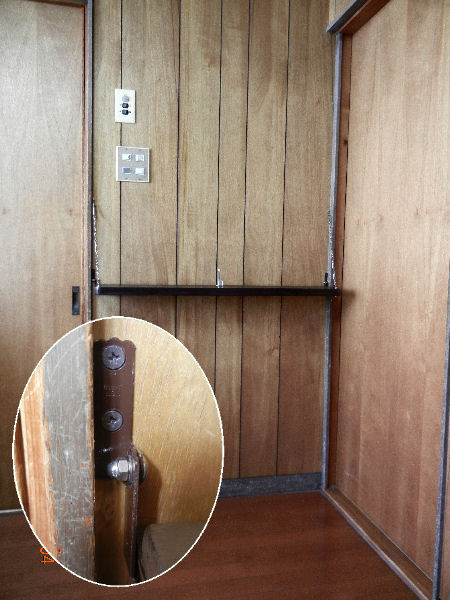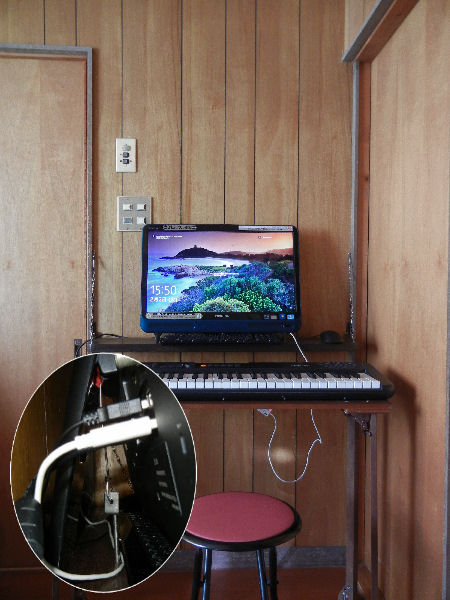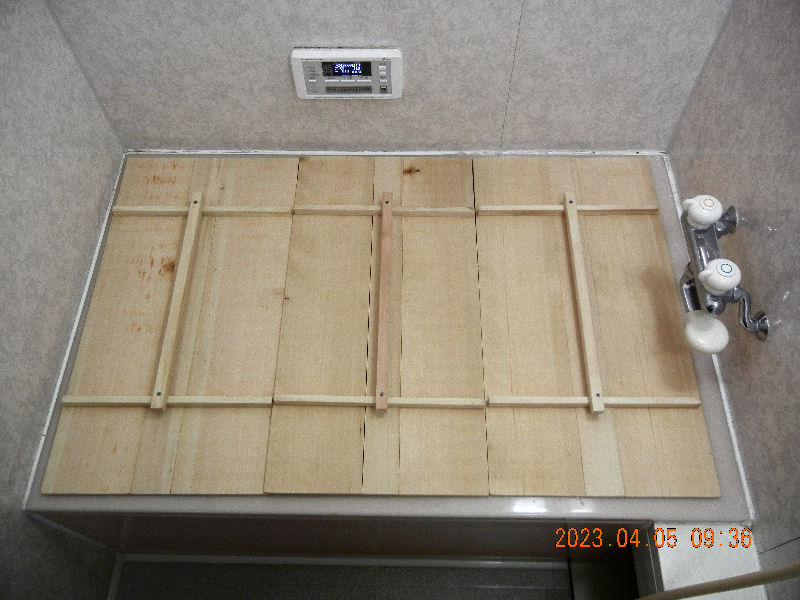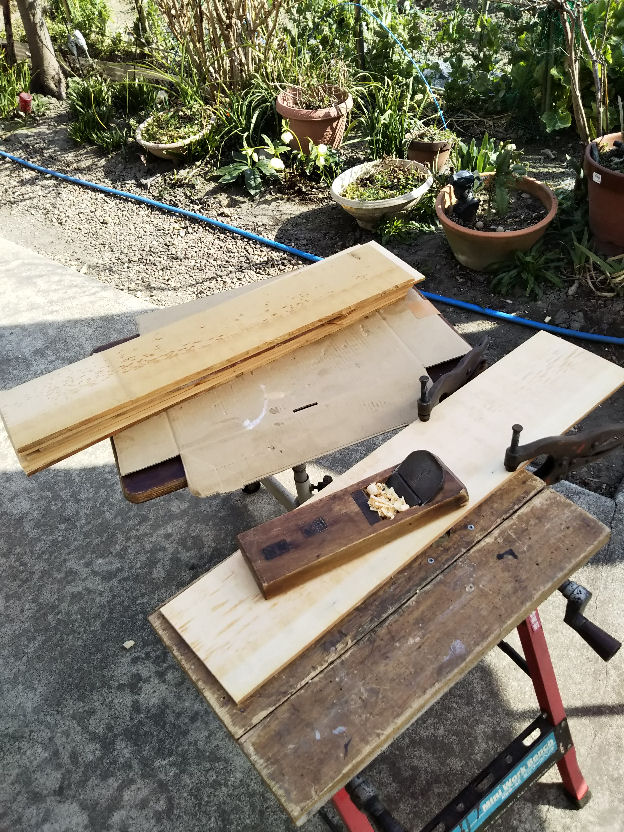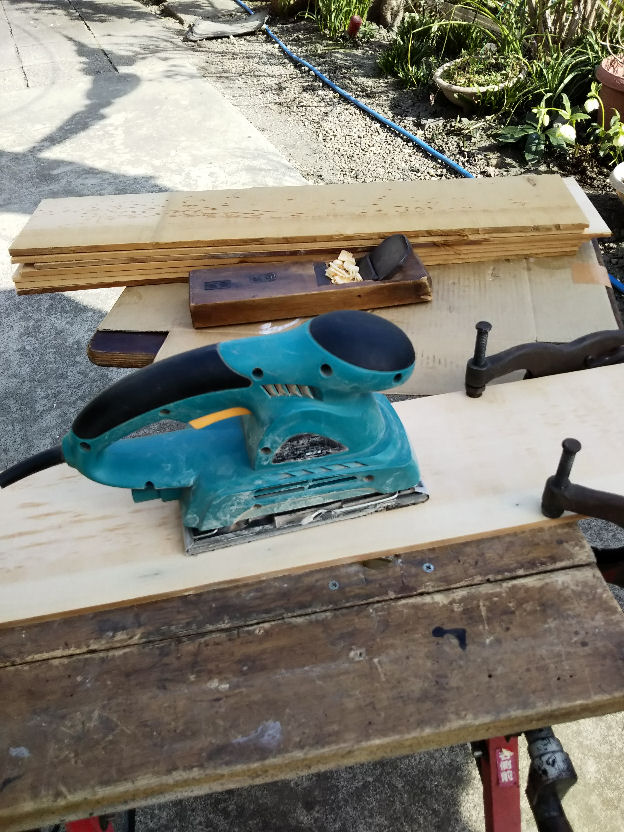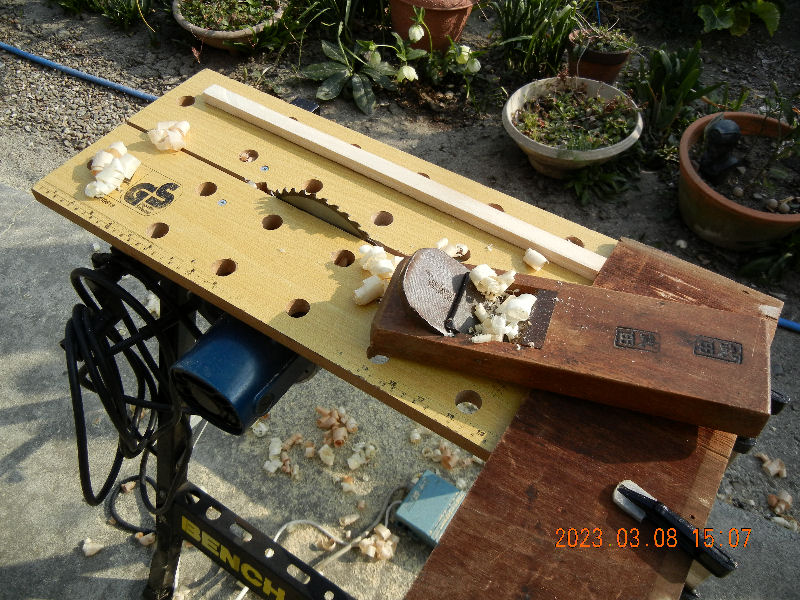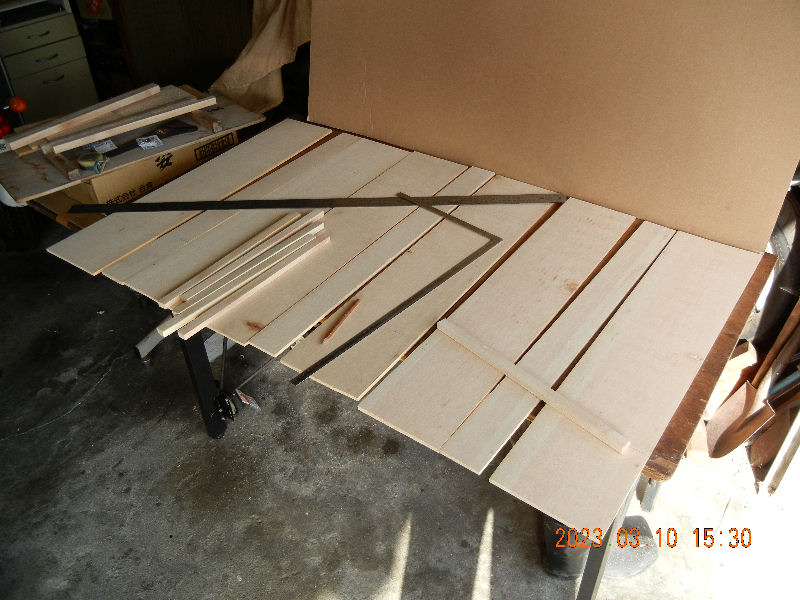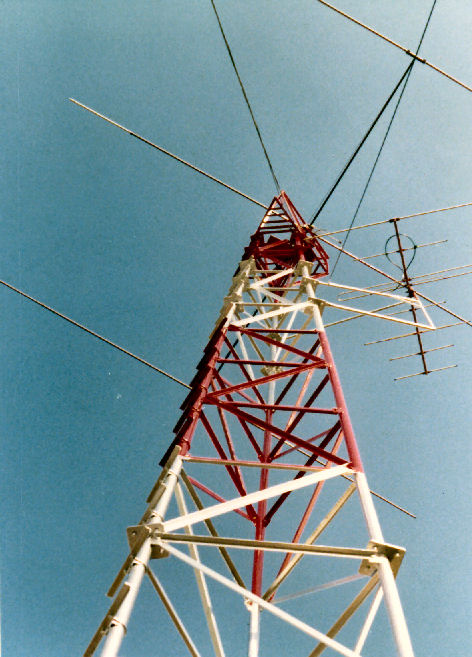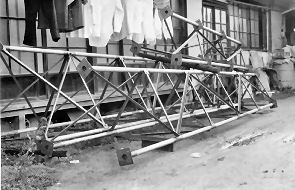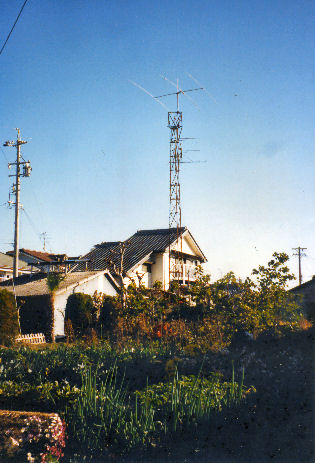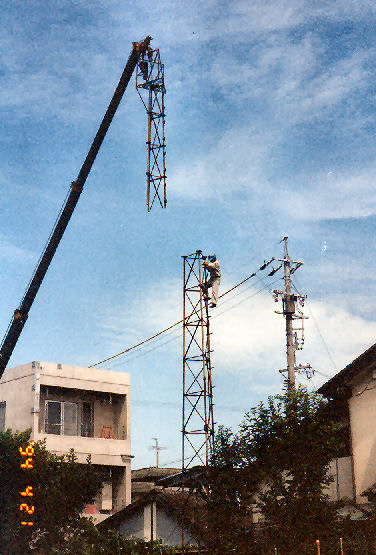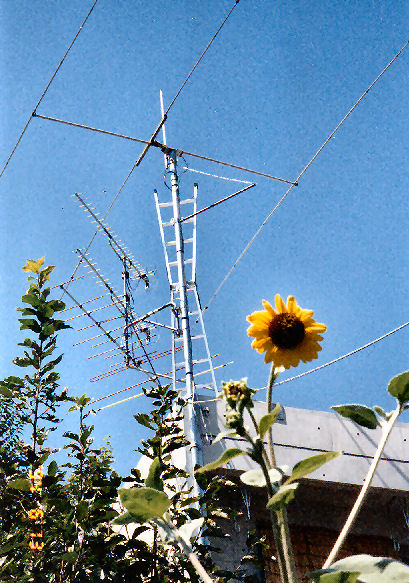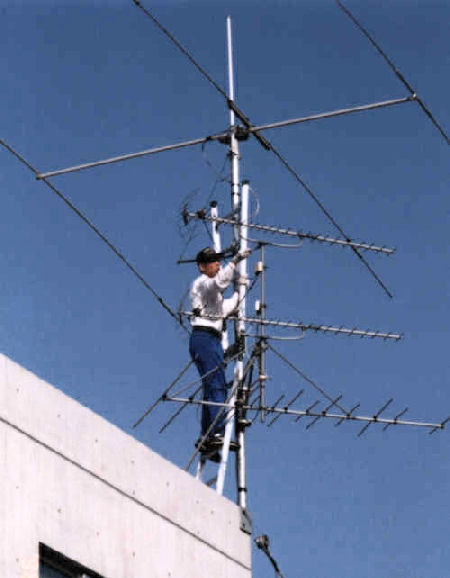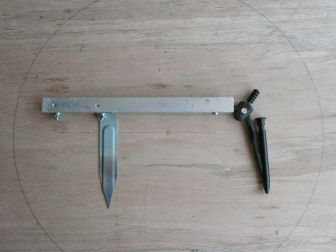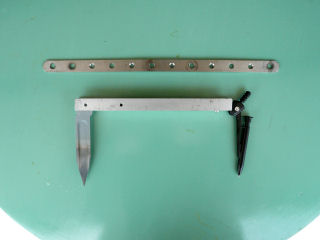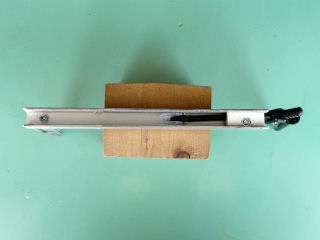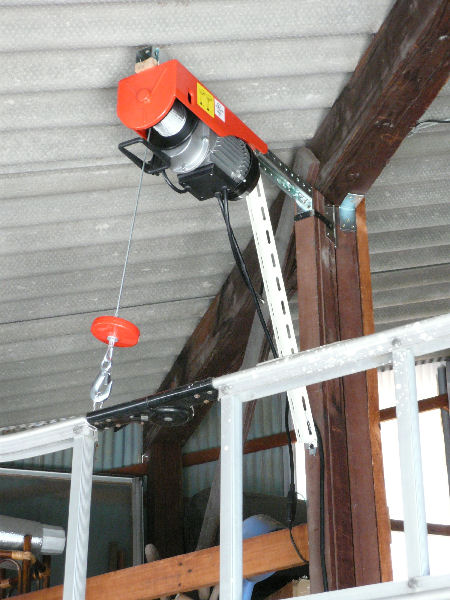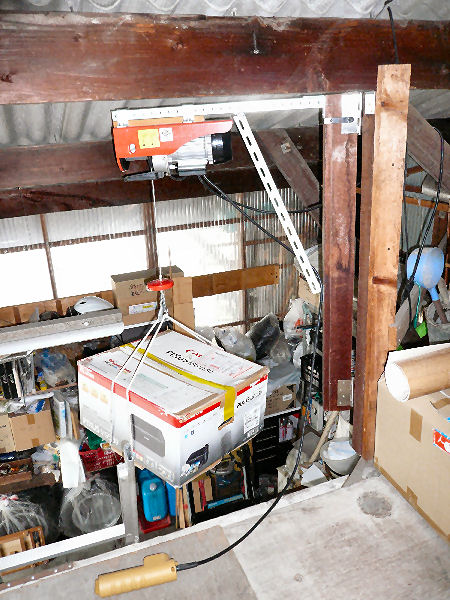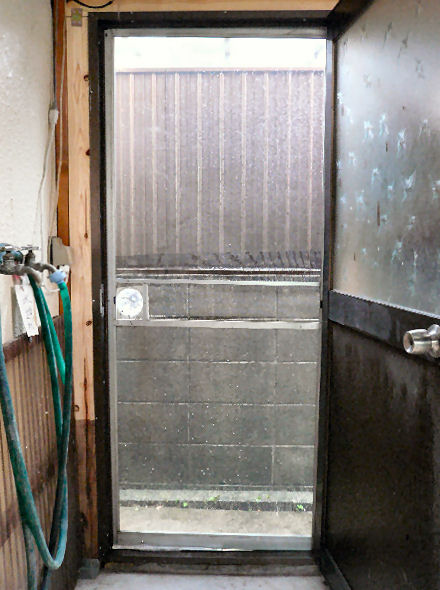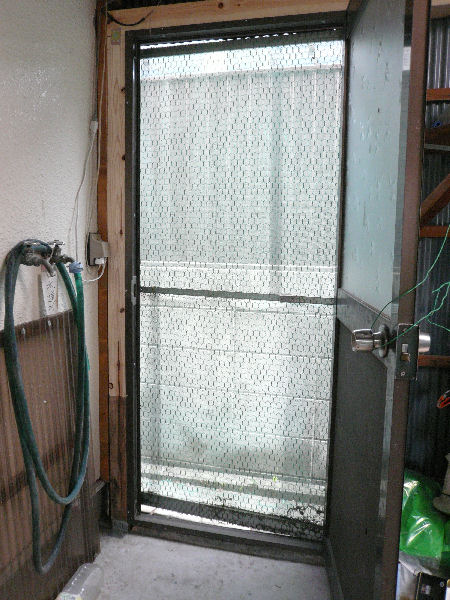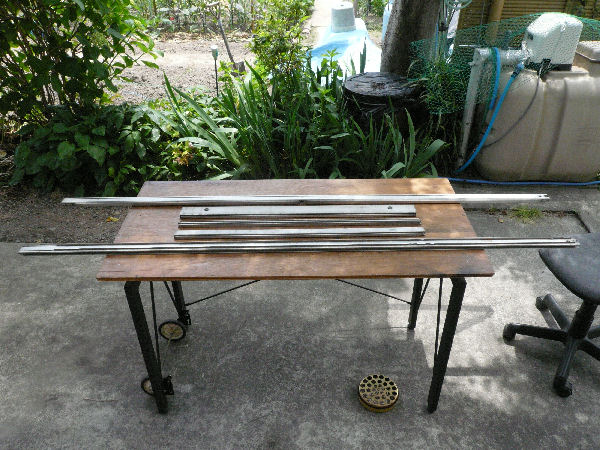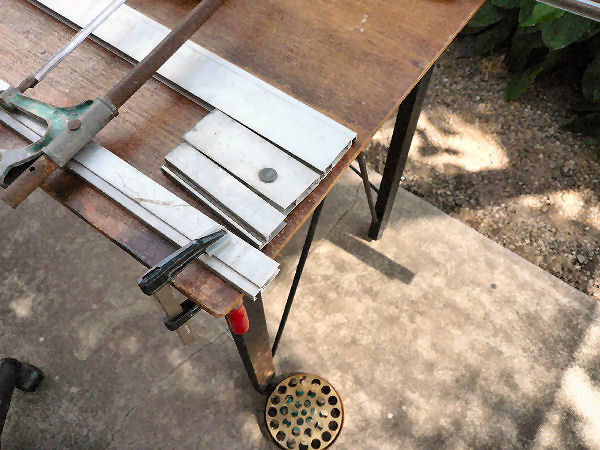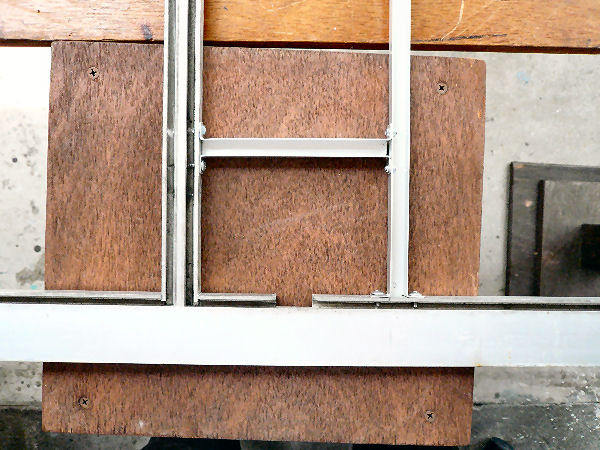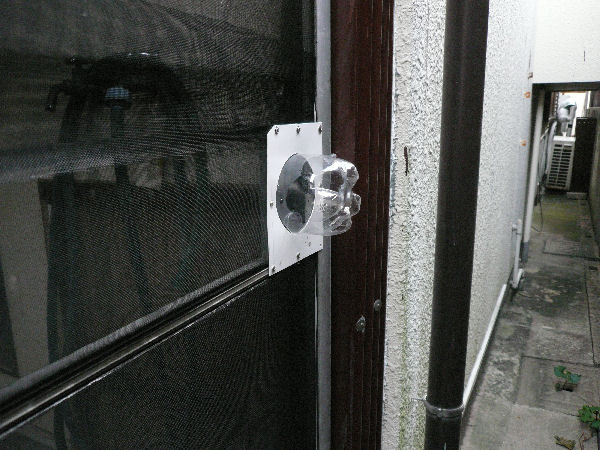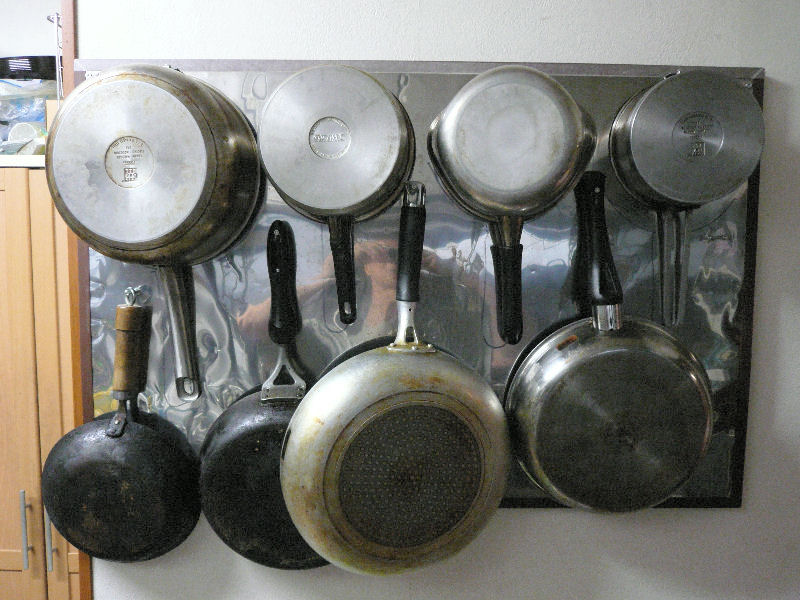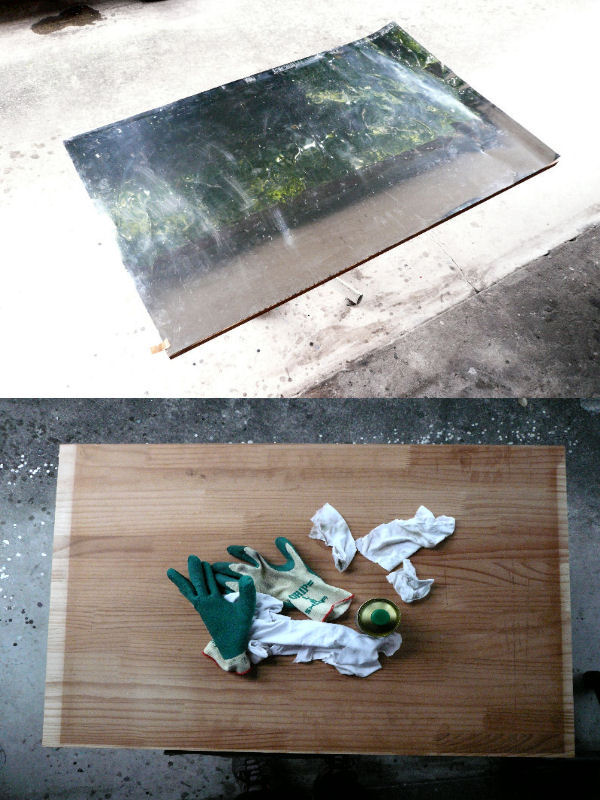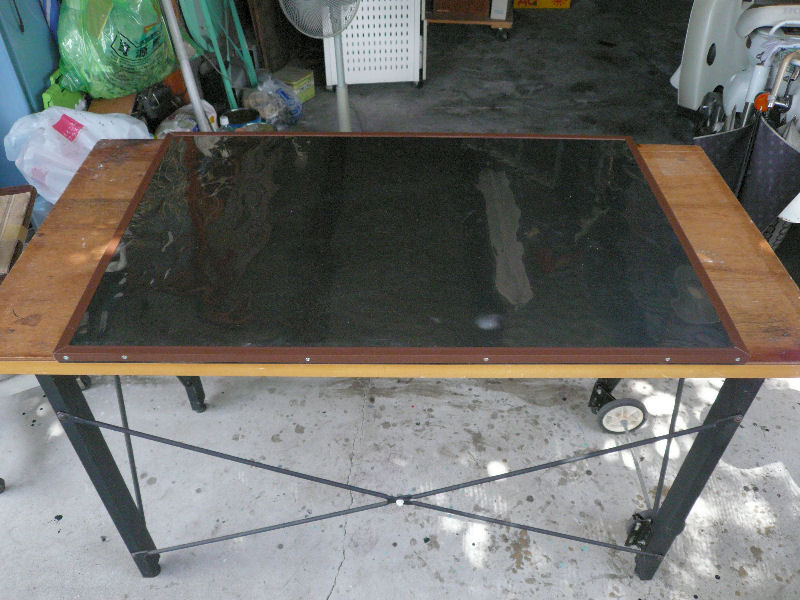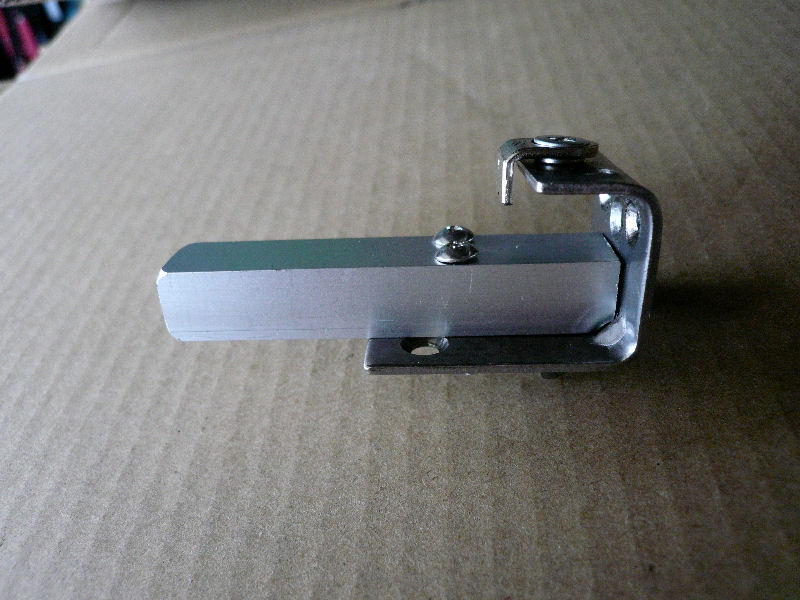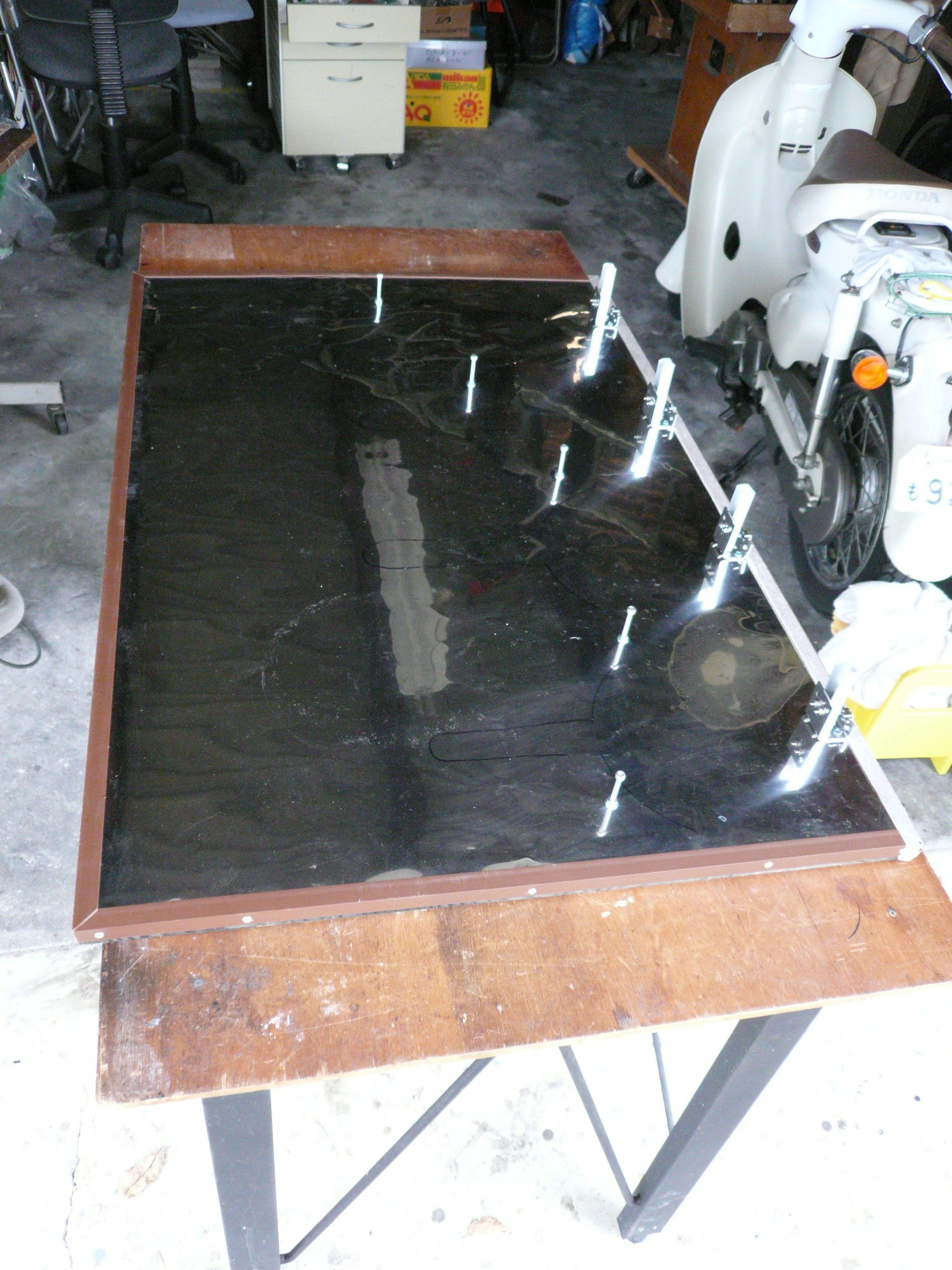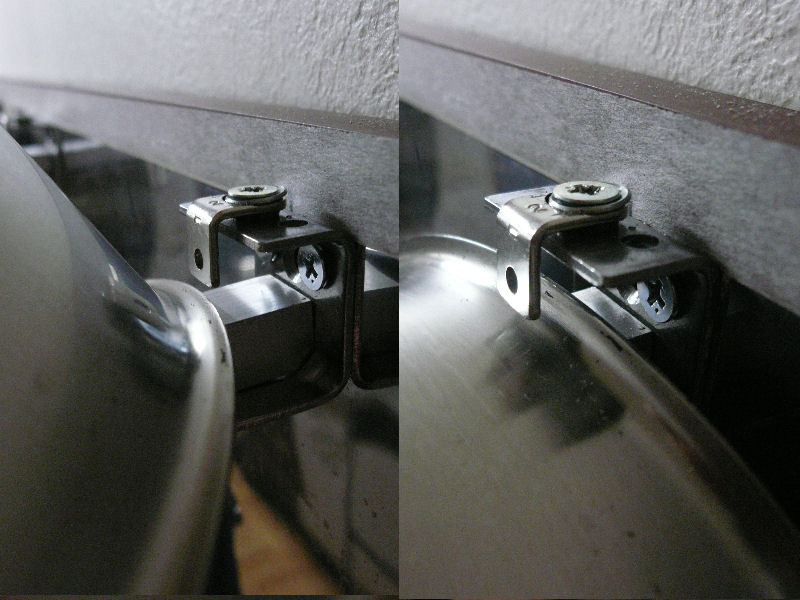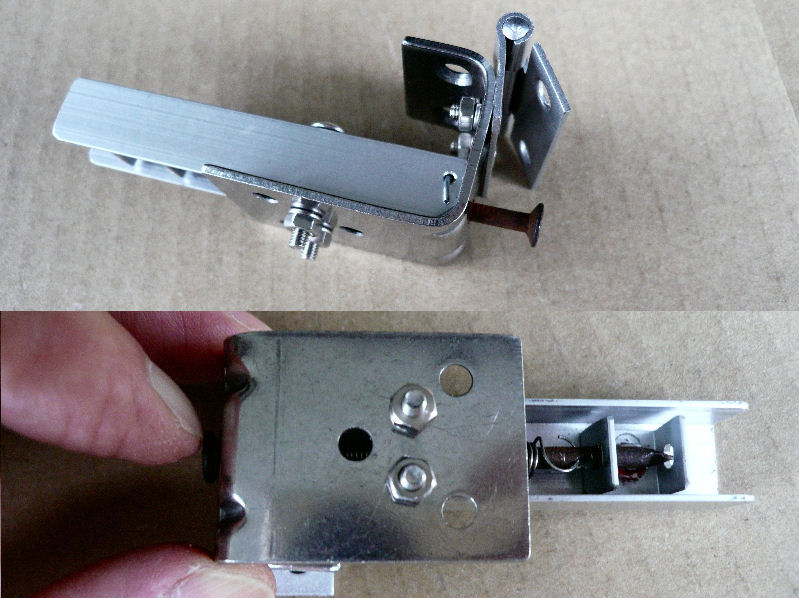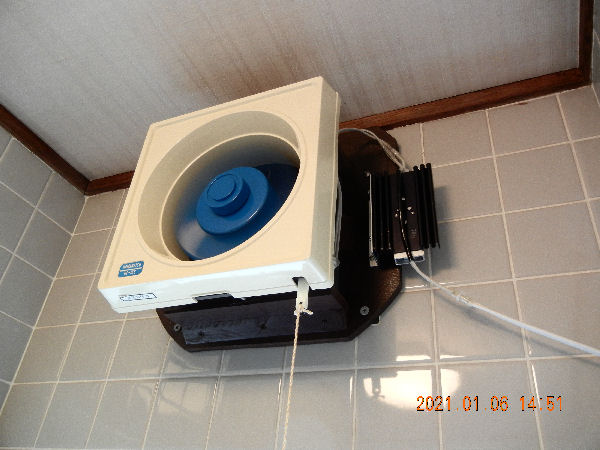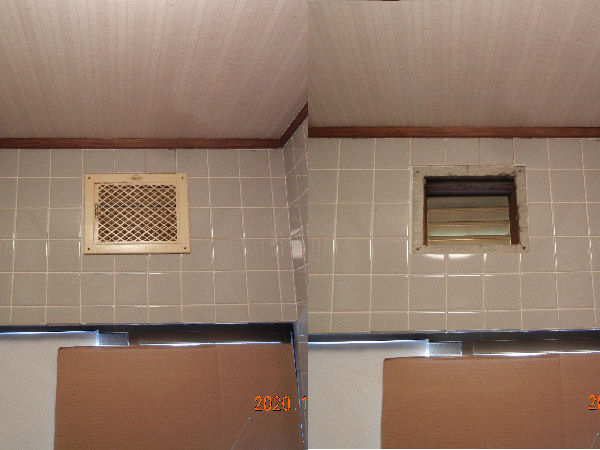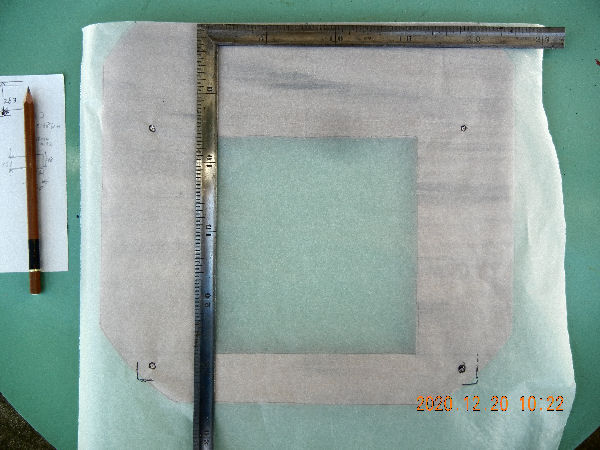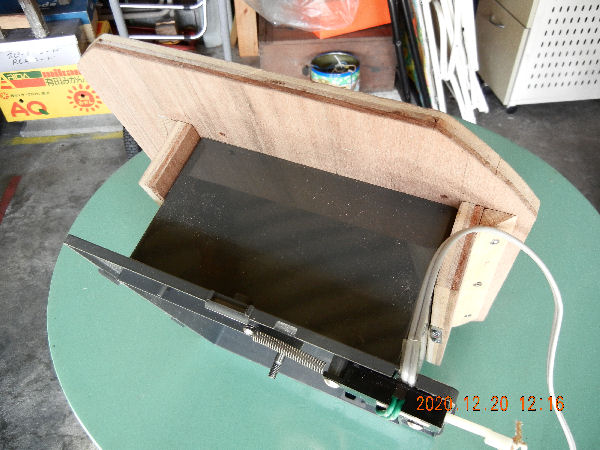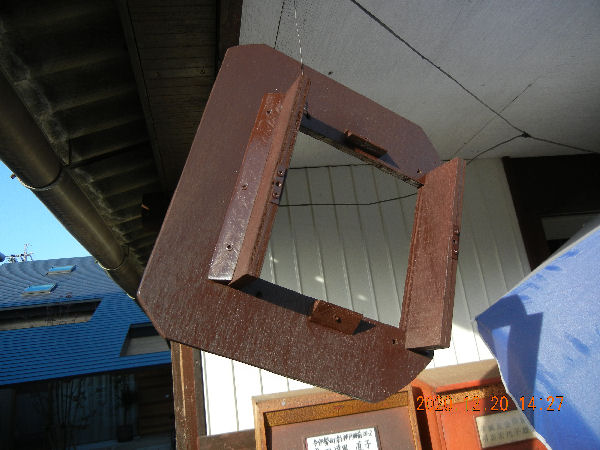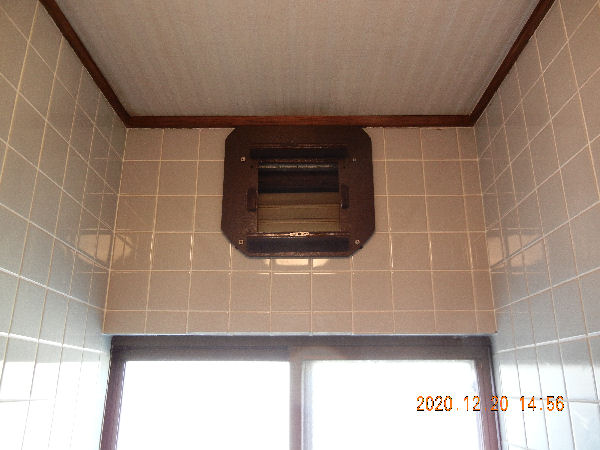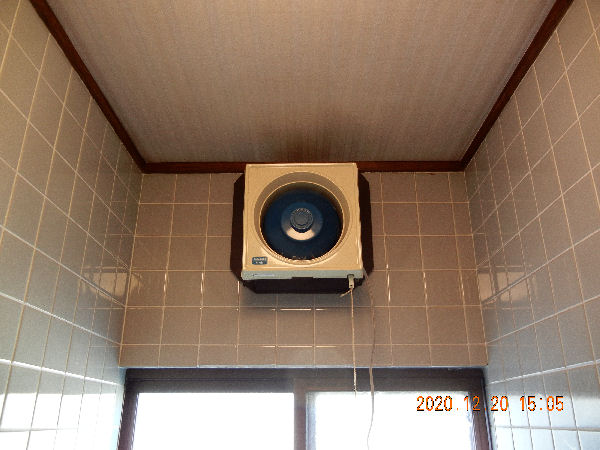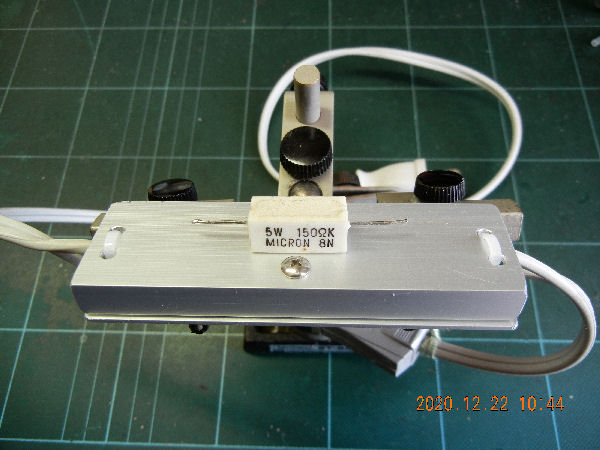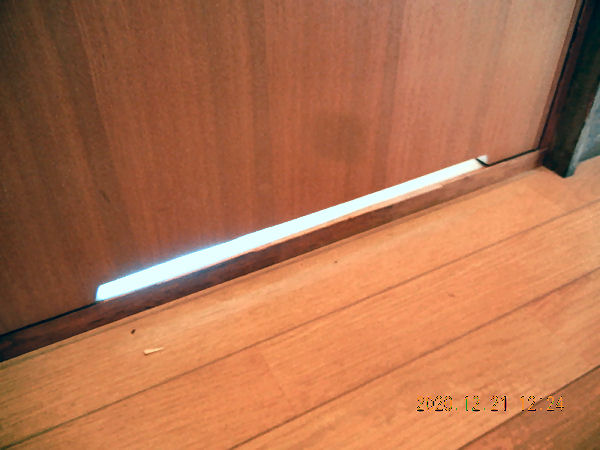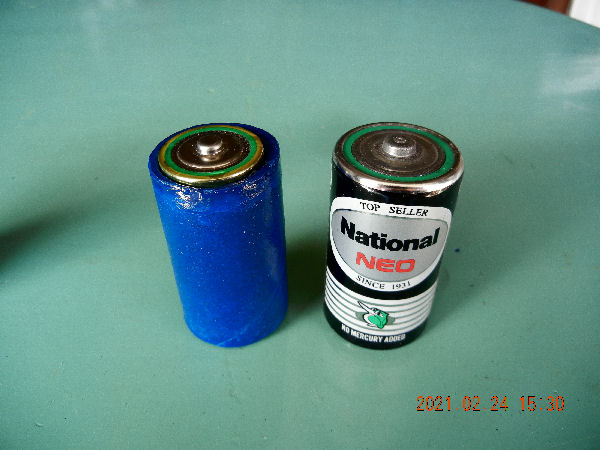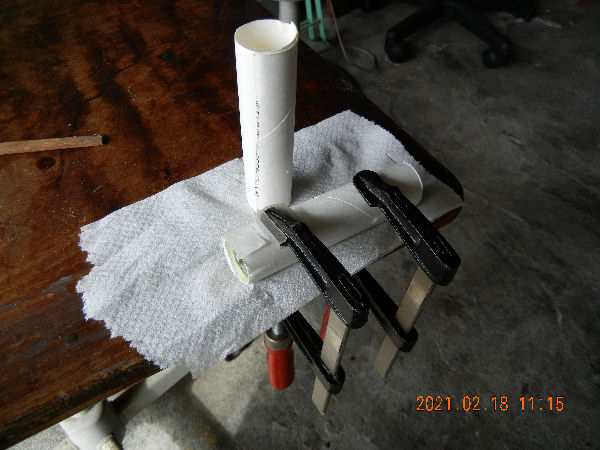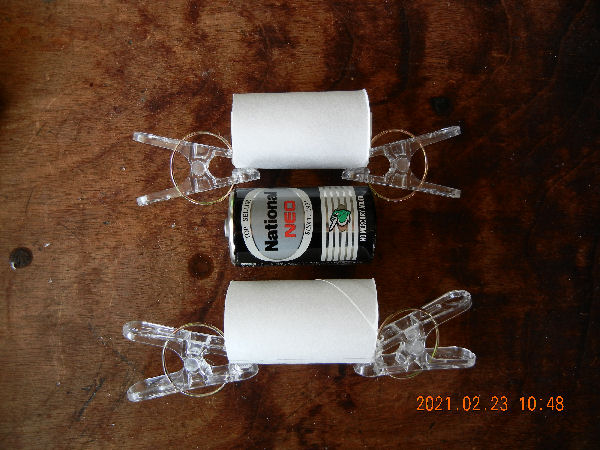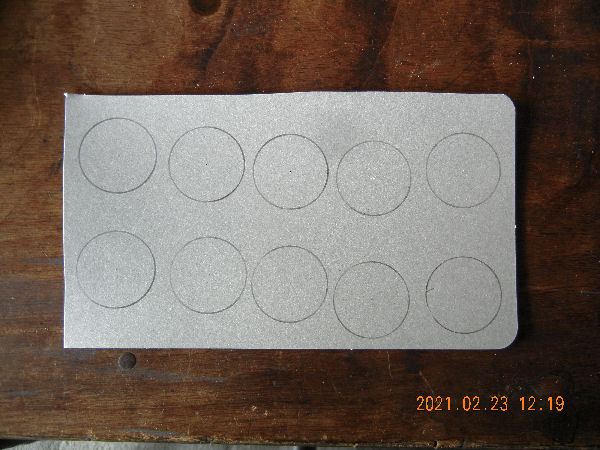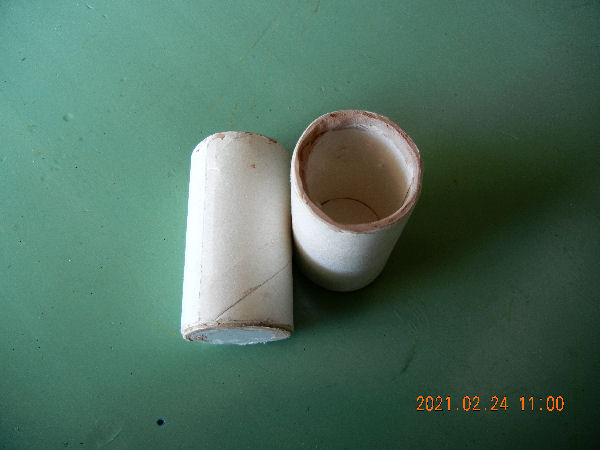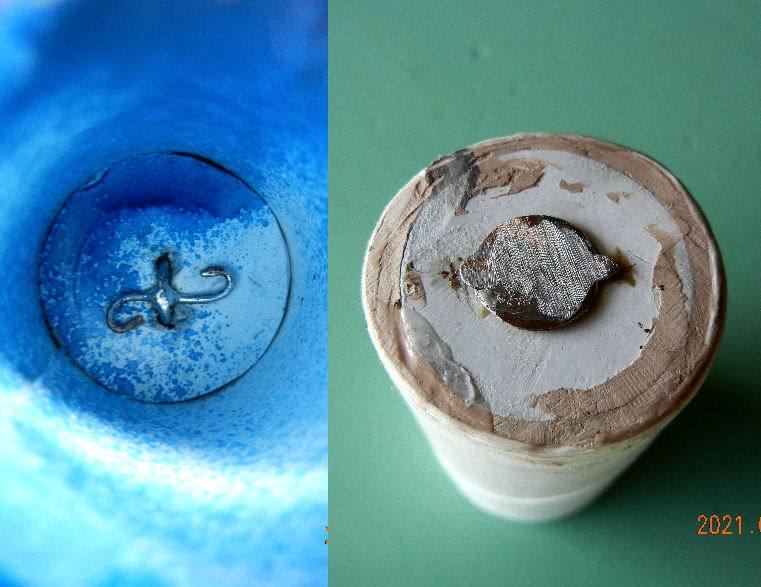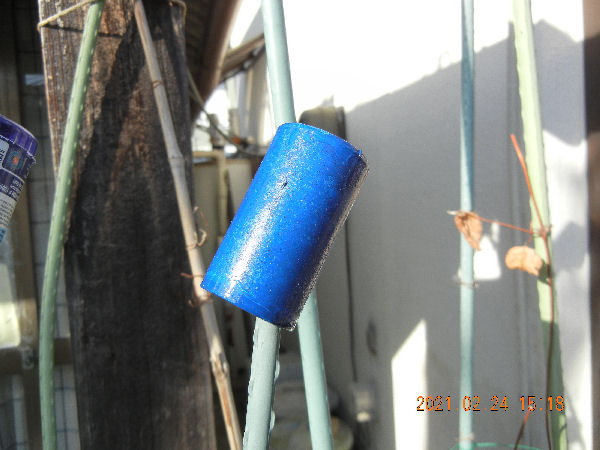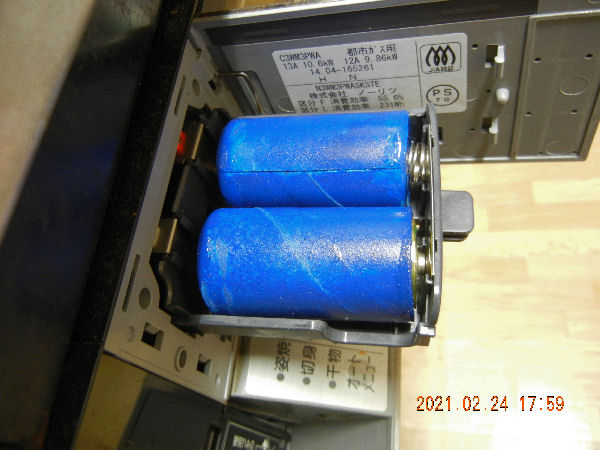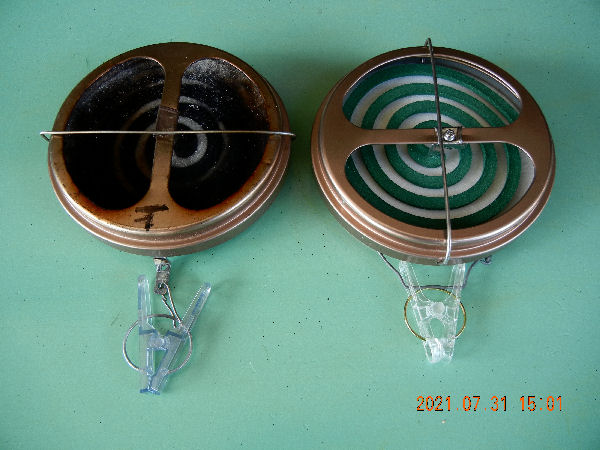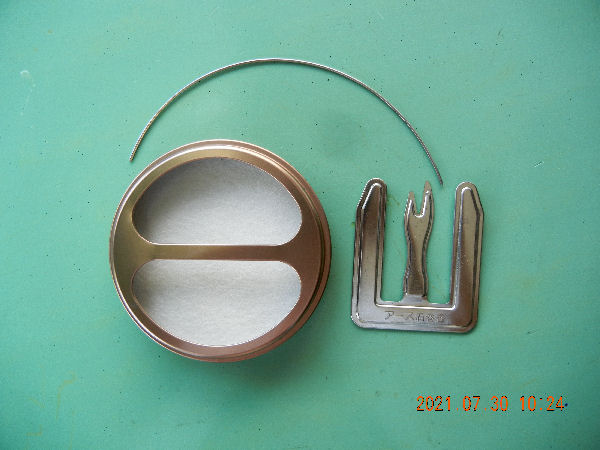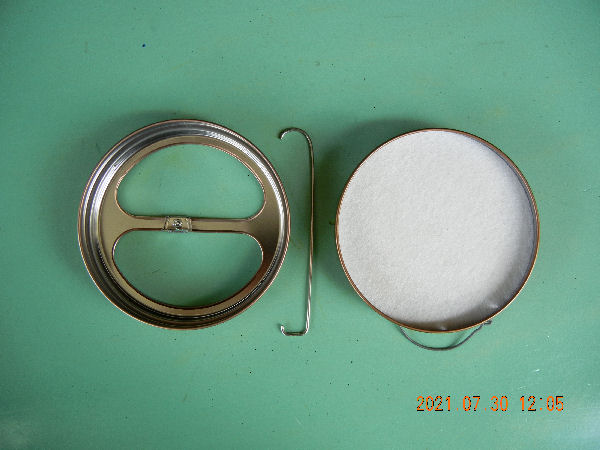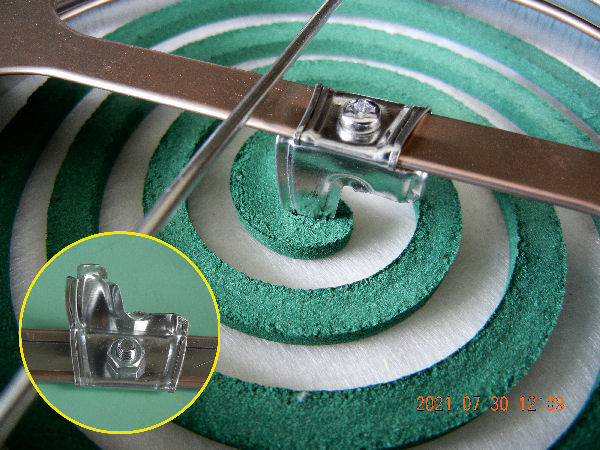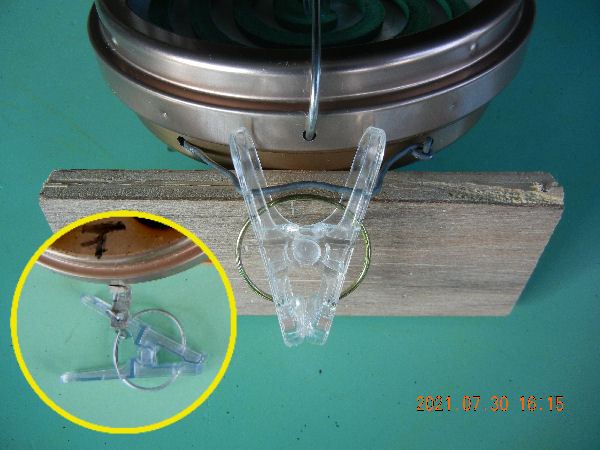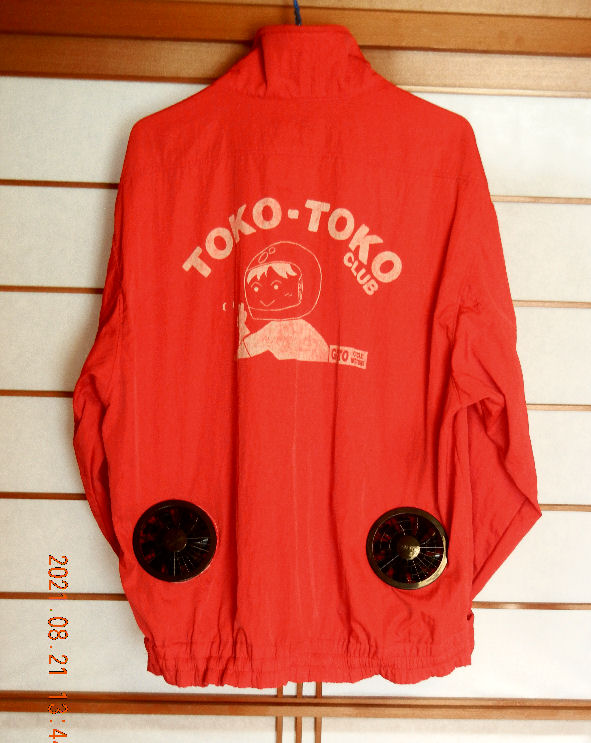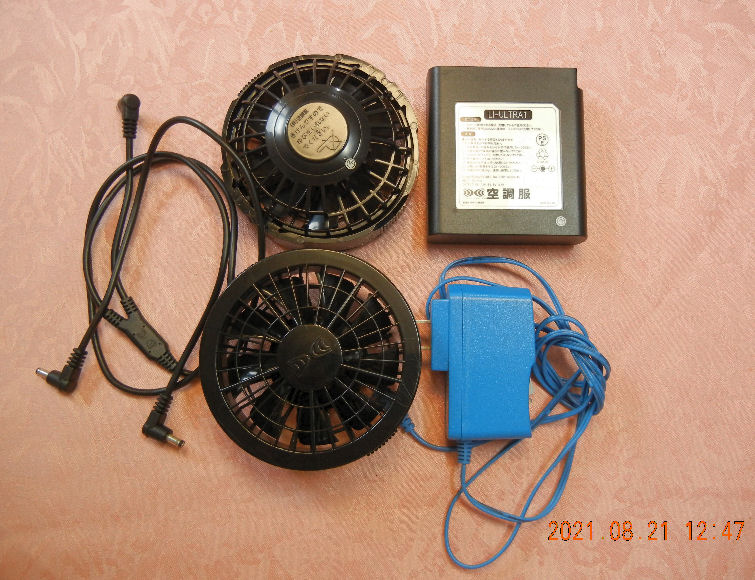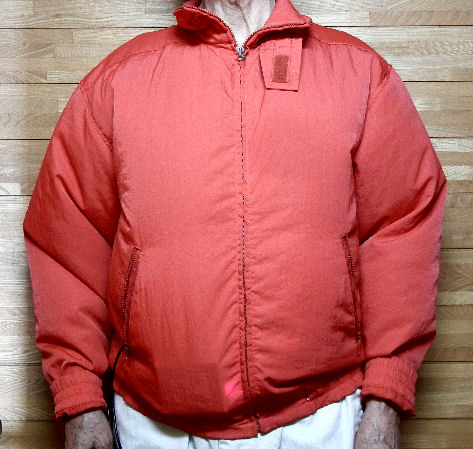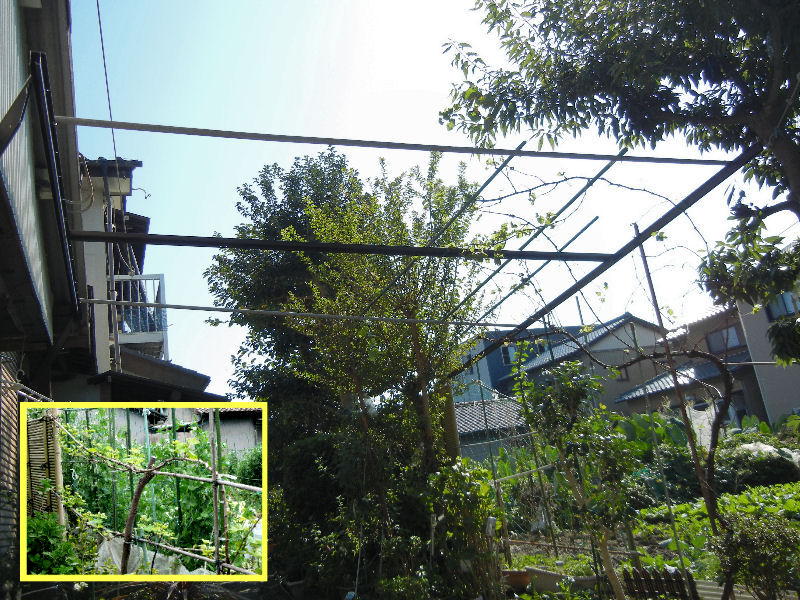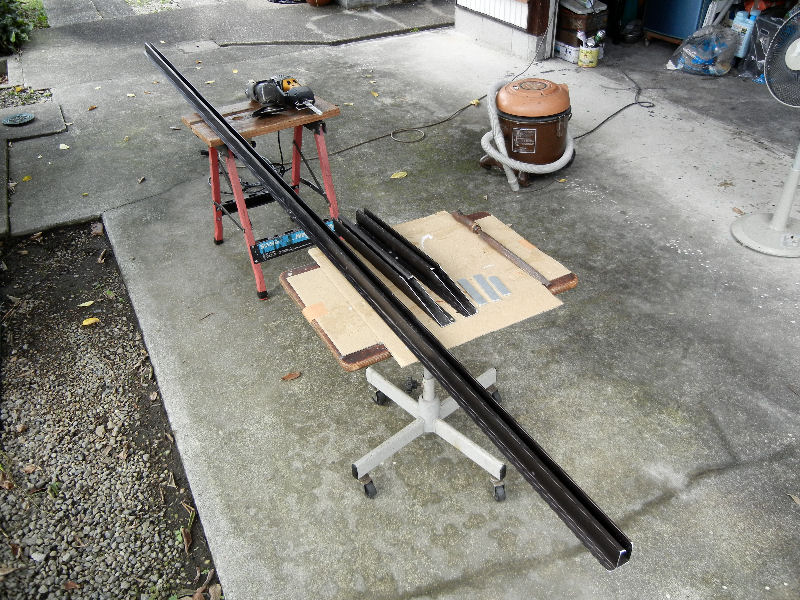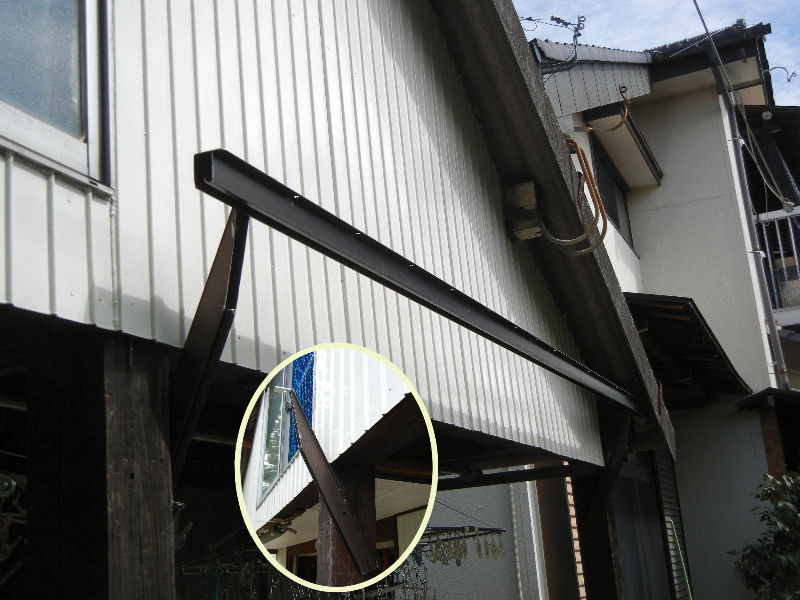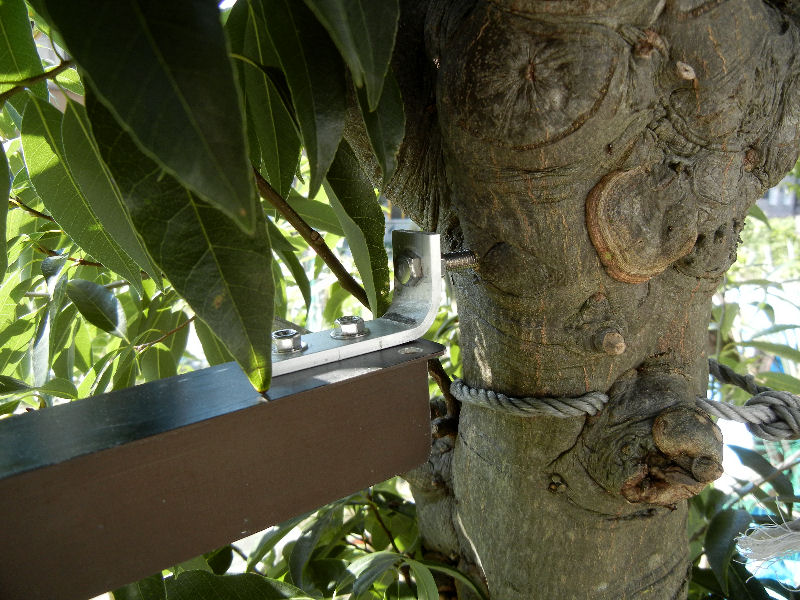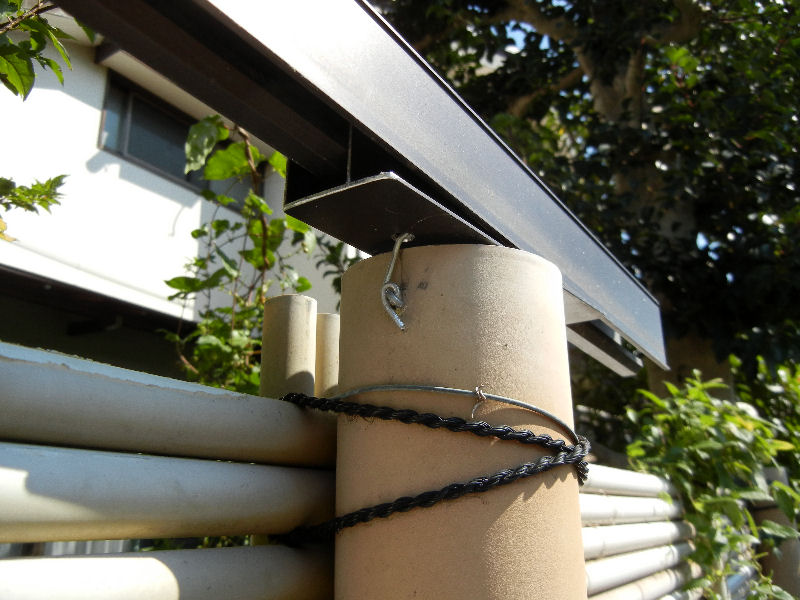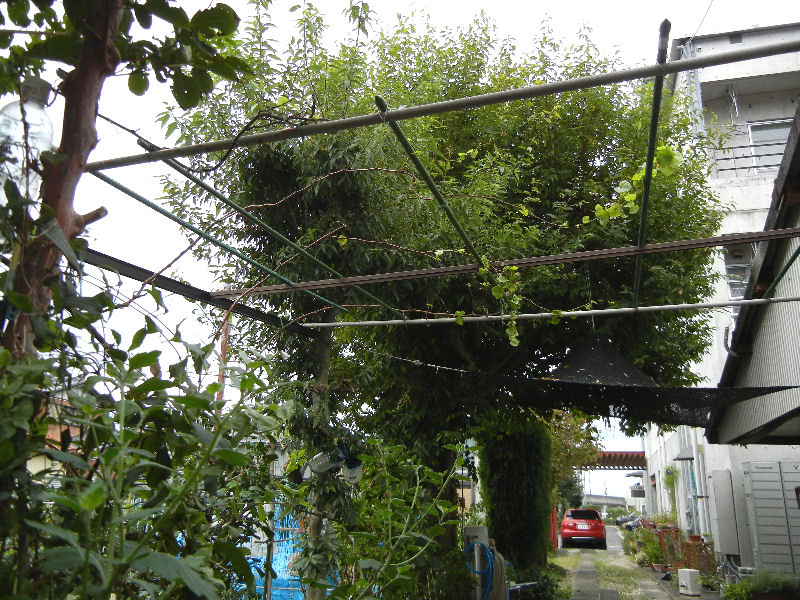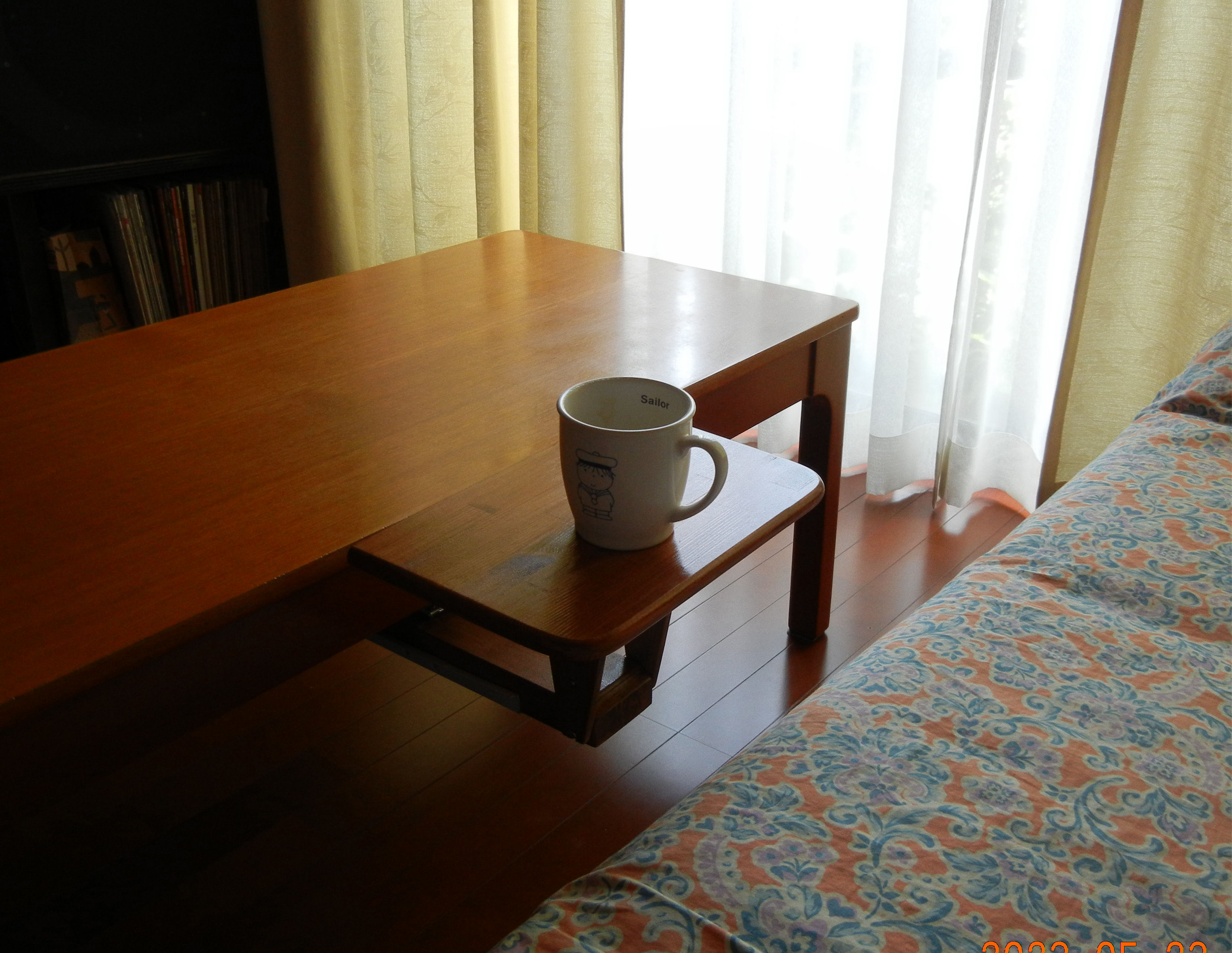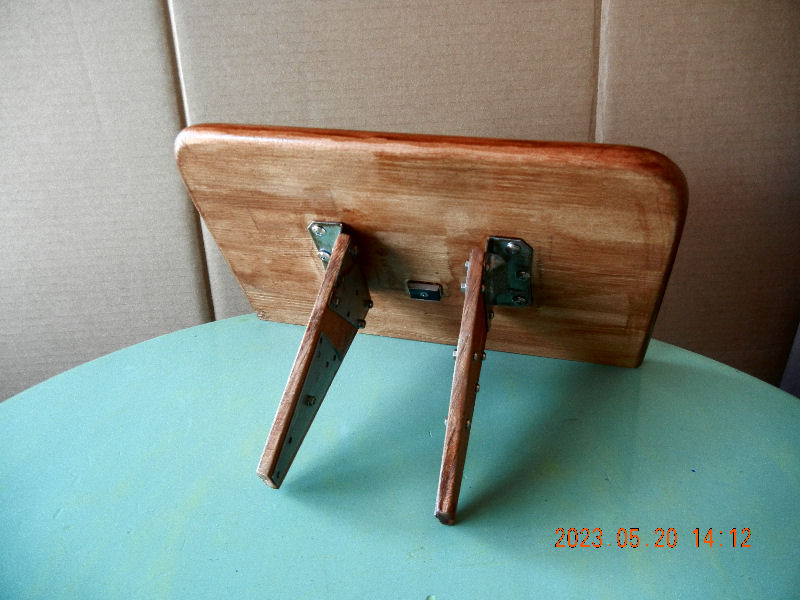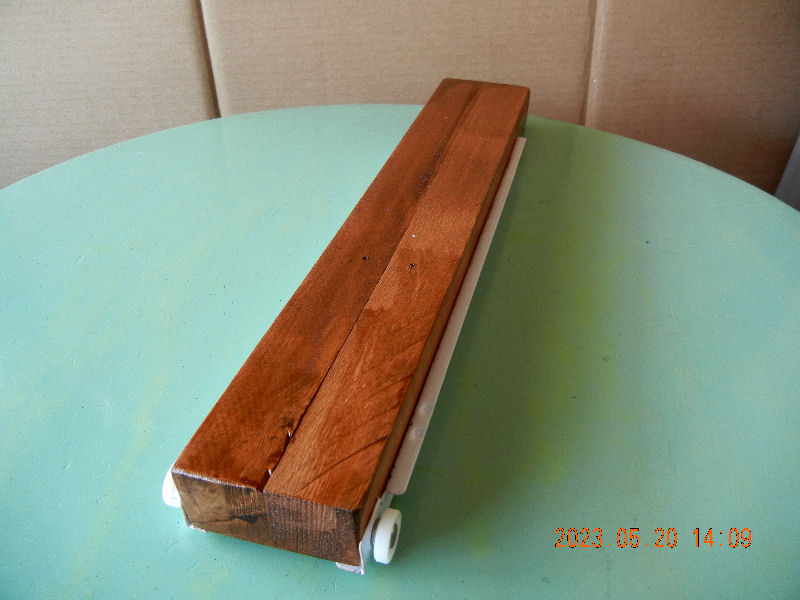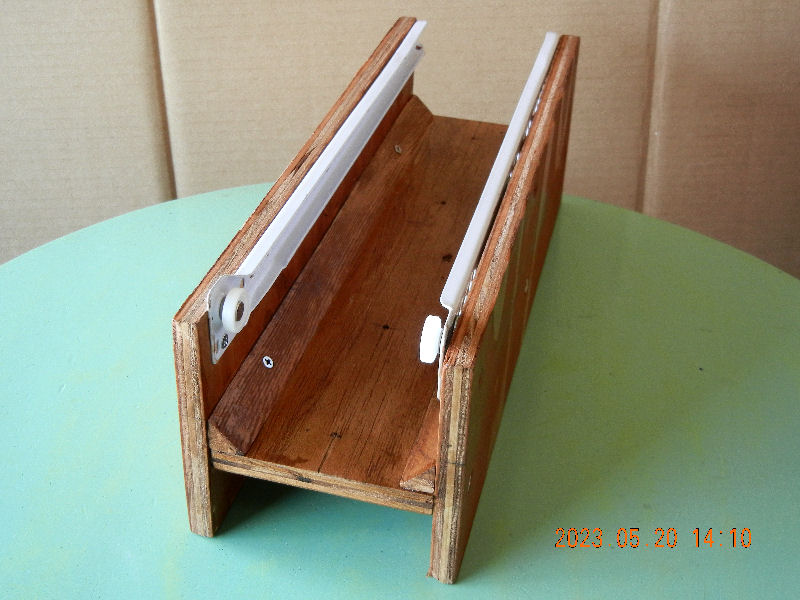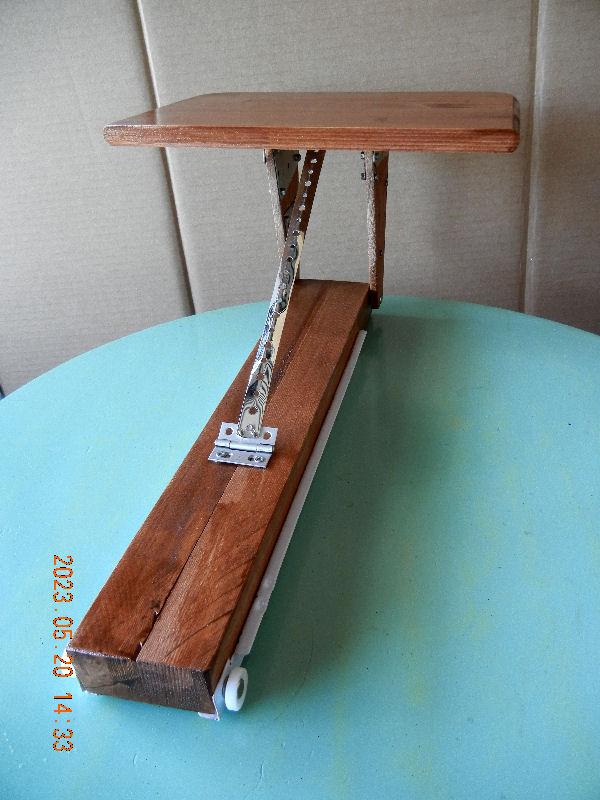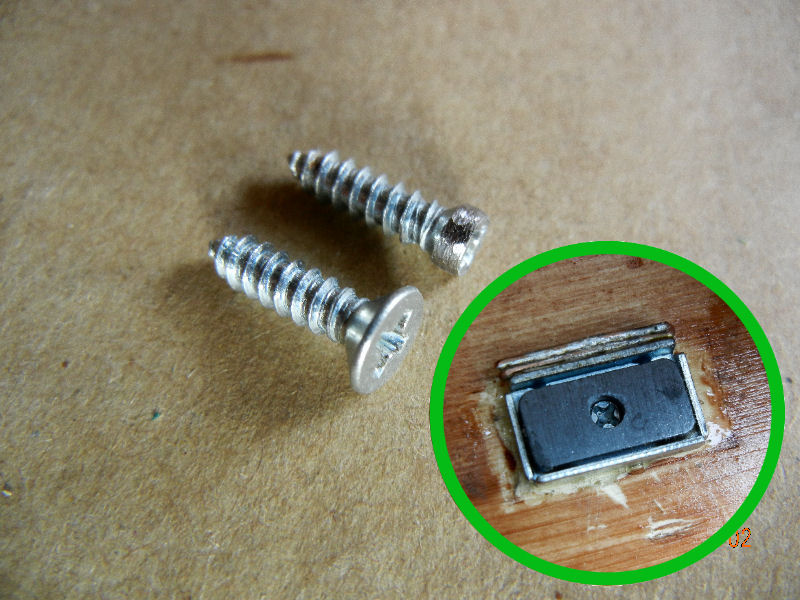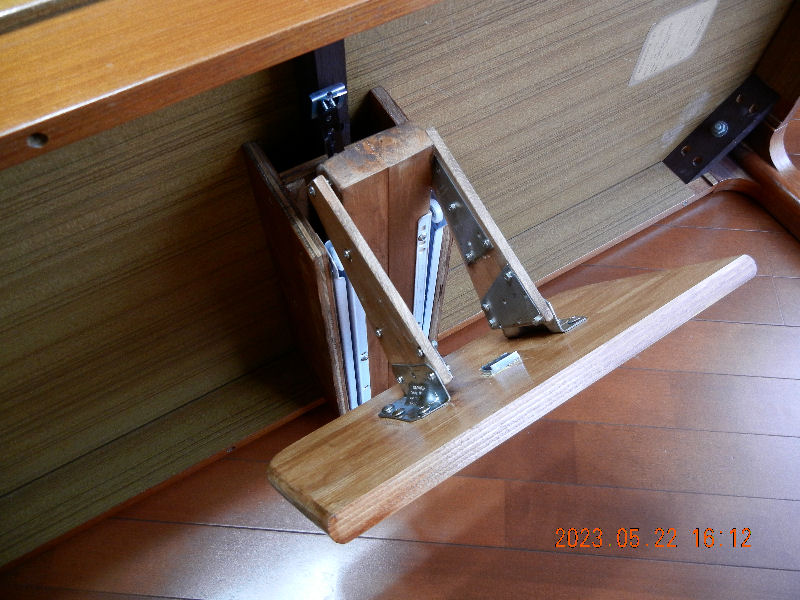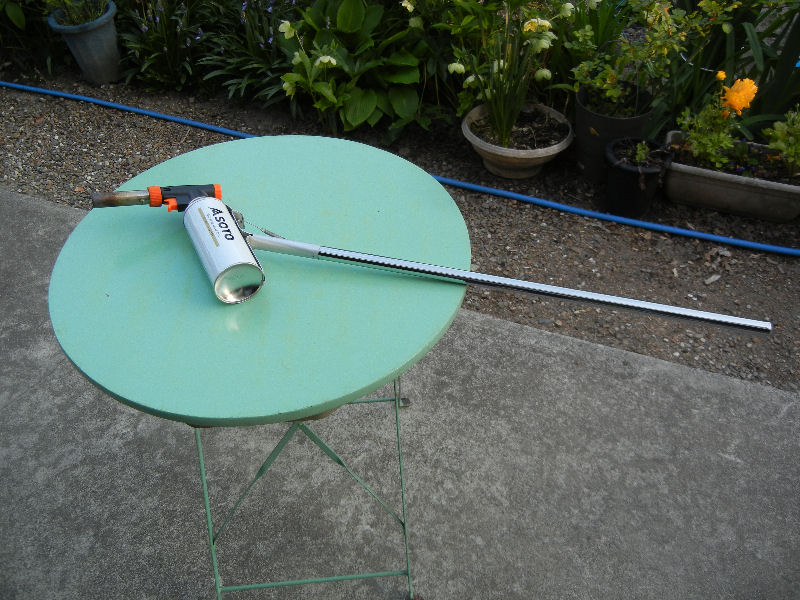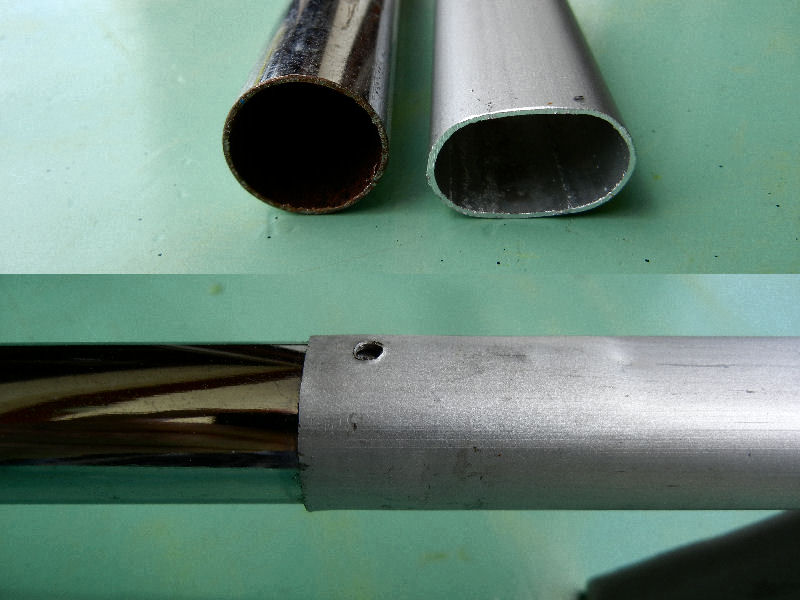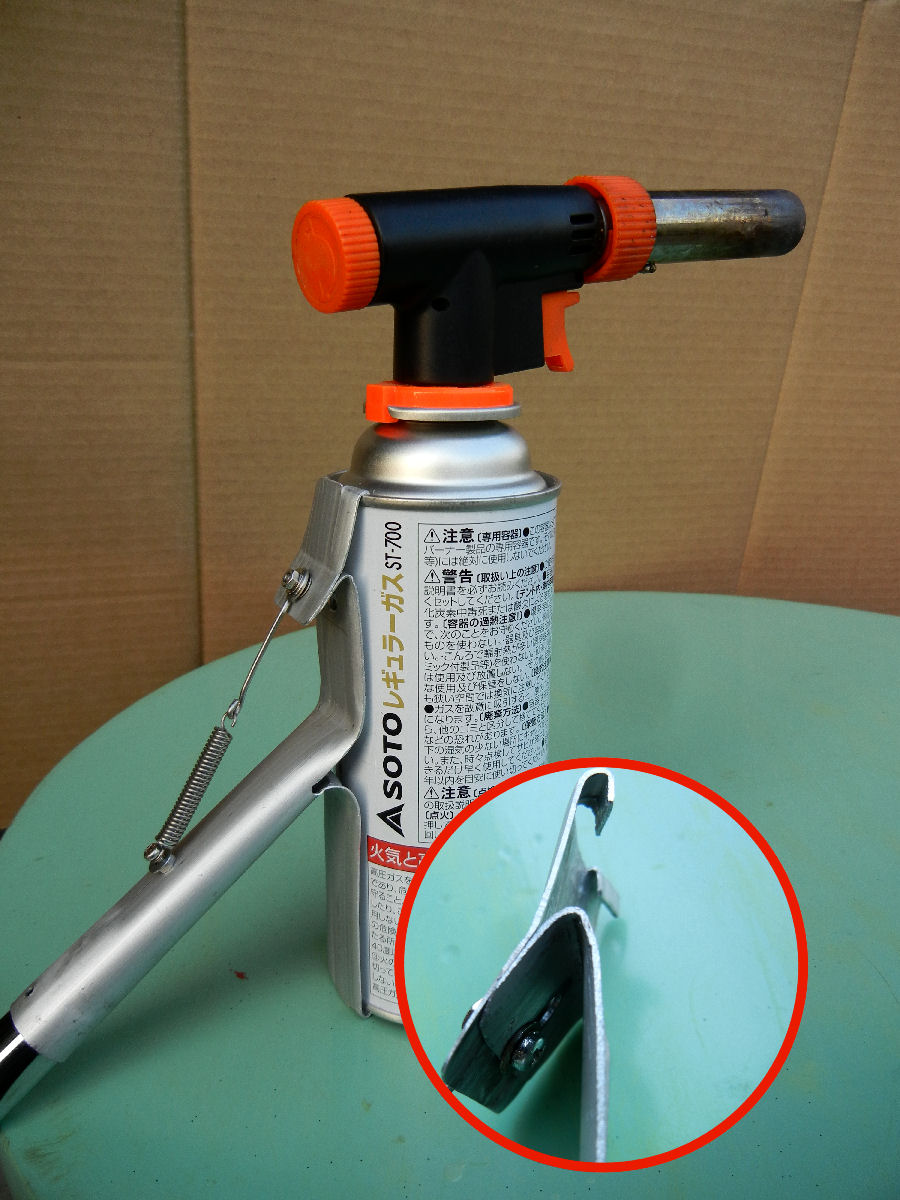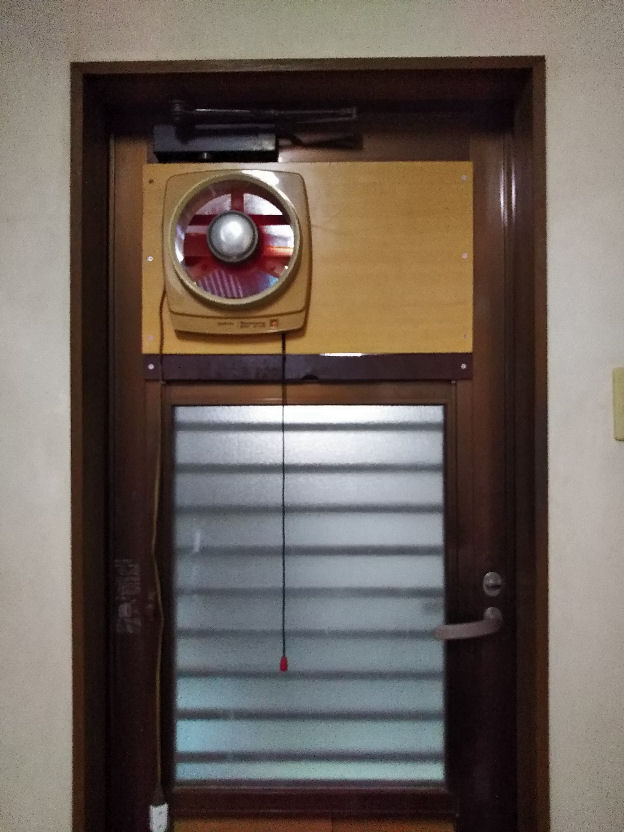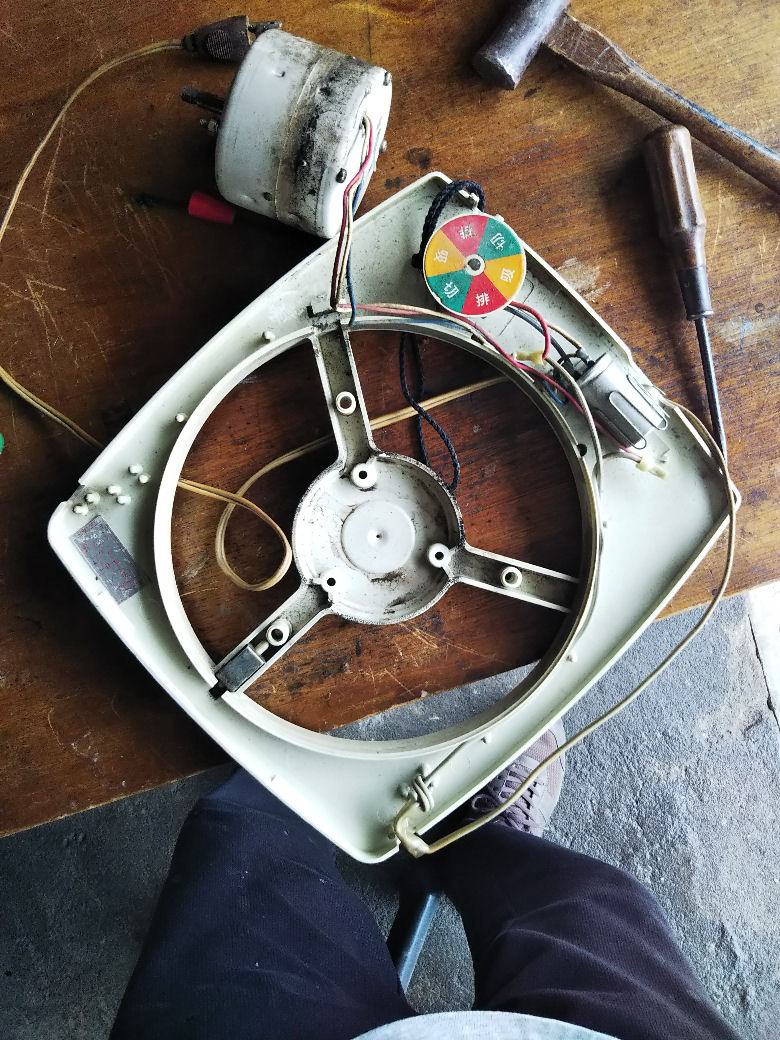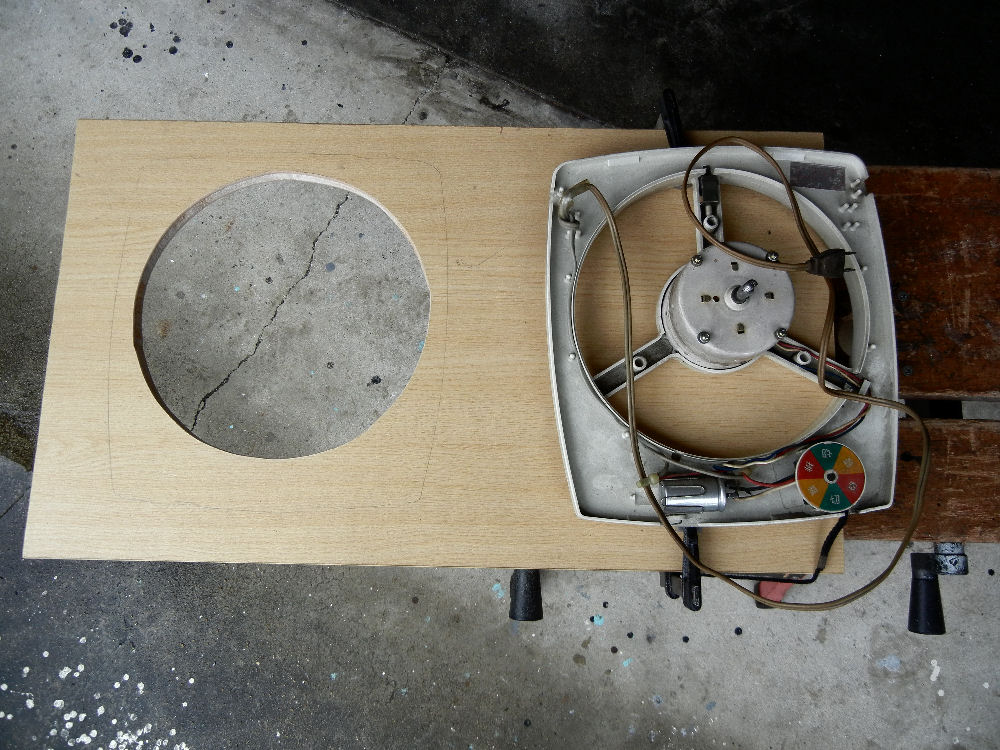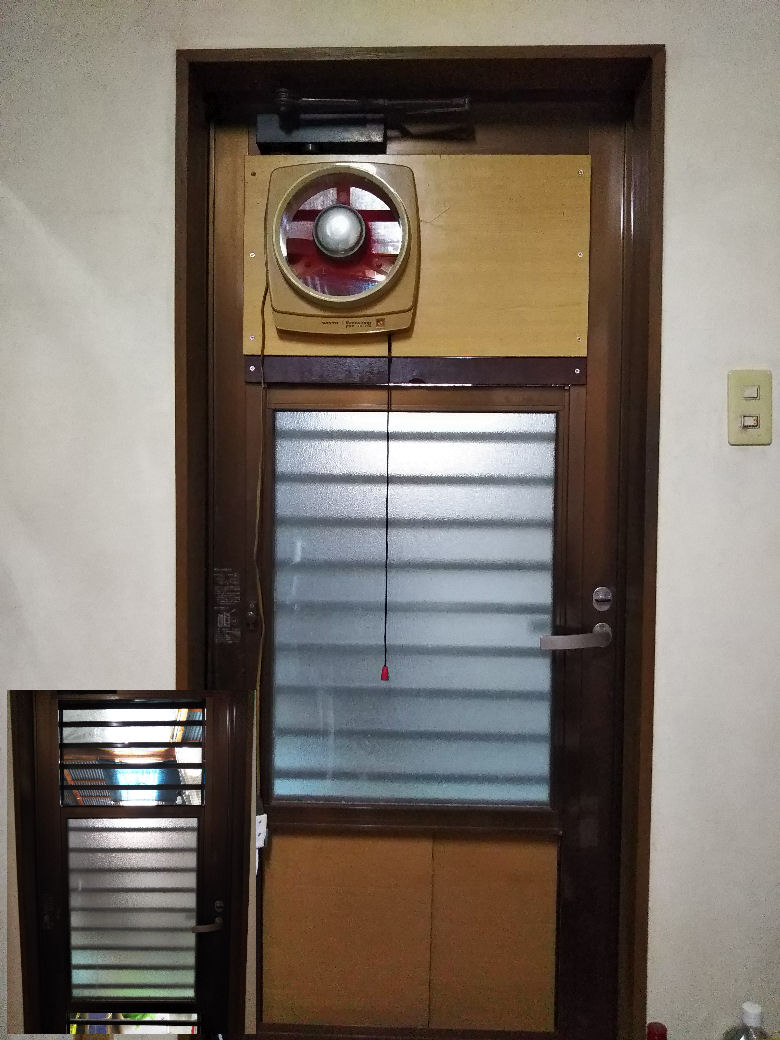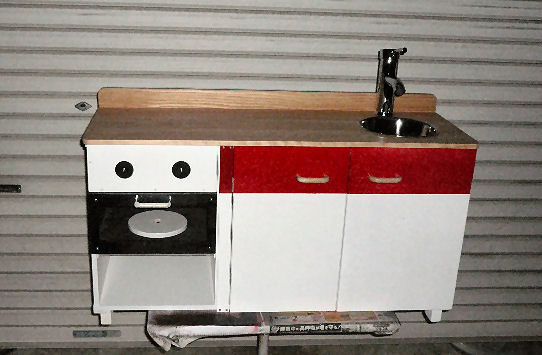
Play house kitchen counter built on a box sold on the market
One day in late November in 2015 my daughter asked me if I could make a play house kitchen counter utilizing a ready-made colored particle board box for her daughter. I was ignorant of a play house kitchen counter. She showed me various types of such counters. It looked interesting to try and I did it. I could deliver the counter as shown in the photo on Christmas Eve.-1/27-
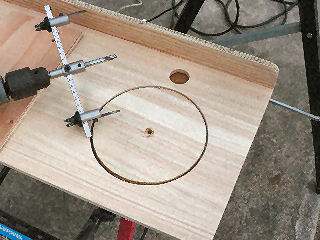
Cutting holes for a faucet and a sink on the top plate.
A 200mm caliber stainless bowl is planned to use as a sink.The material of the top plate is glued laminated timber and that of the end plate is prywood.
The plate is about 10mm wider and 20mm deeper than the colored box so that the top plate makes eaves in front and on both sides.
-2/27-
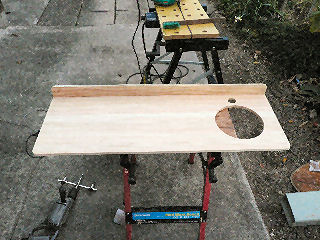
The top plate ready to be painted.
In cutting a hole, it is an iron rule to do it from both sides. I had forgotten it and when cutting the bigger hole, I did from upper side only and made the cut end on the other side ugly.-3/27-
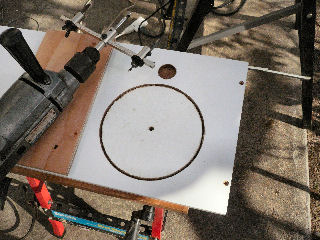
cutting the same holes on the colored box.
Cutting holes on a particle board is more difficult.-4/27-
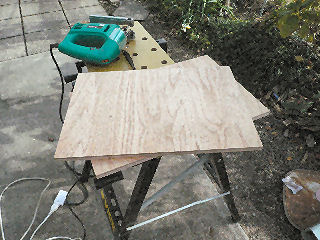
Cutting doors from a 900mm*1800mm*12mm plywood.
I was afraid if they were a bit too heavier but actually, they weren't. Besides, 12mm thickness was good for fitting hinges with screws.Those plates needs sandpapered on all the edges in order to protect them from damage.
-5/27-
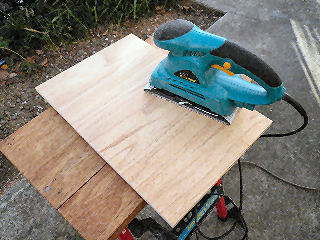
Sandpapering on surfaces with care not to damage edges.
-6/27-
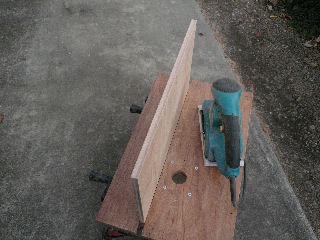
Sandpapering on cut ends.
The corners had to be made round and smooth for safety's sake, which I forgot. I did it after finishing assembling.-7/27-
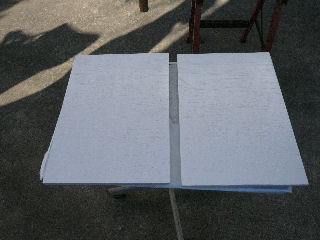
Painting doors white.
They were partially painted red after this with masking unnecessary portions. I forgot to take a photo of that process.-8/27-
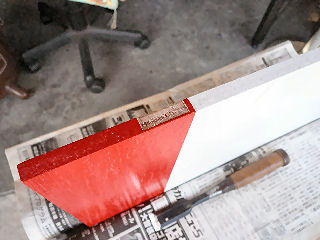
Carving a hinge pit.
It should have been done before painting!!I was too fool to take the right door from the left, which I found only after finishing carving.
I used 25mm-long screws for fitting hinges for sturdiness.
-9/27-
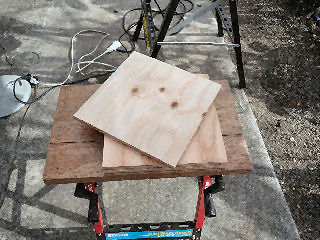
Shelf boards ready to be sandpapered and painted.
-10/27-
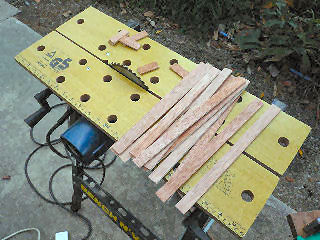
Making shelf rests.
Their polishing and painting can be done simply as they are used inside the counter not to be seen.-11/27-
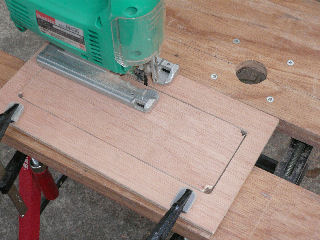
Making an oven lid.
It will be made windw-like with 1.5mm-thick acrylic board.I grued 5mm and 3mm boards, for 12mm board seemed too thick. So, the lid became 9.5mm thick in the end.
-12/27-
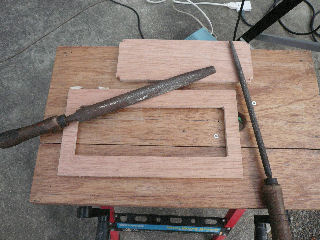
Finishing the window frame.
-13/27-
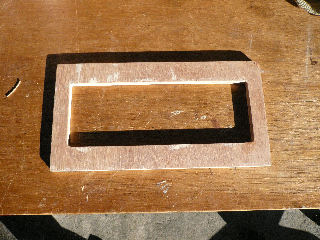
Applying putty to broken edges.
The 3mm board was too old to be cut without damaging edges.-14/27-
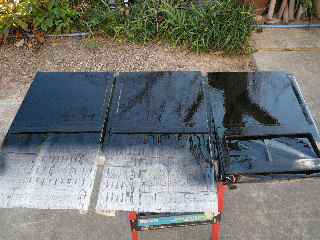
Painting the portions of boards that face the inside of the oven.
-15/27-
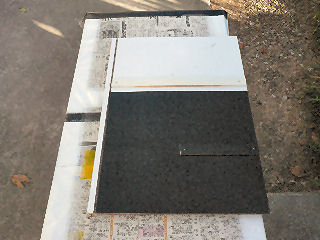
Painting finished and shelf rests fixed.
-13/27-
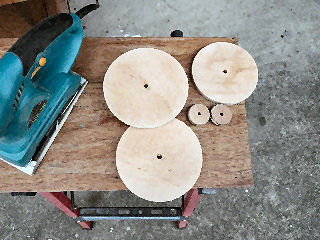
Making an oven roter, range trivets and adjuster nobs.
I used remainder wood of speaker making.-17/27-
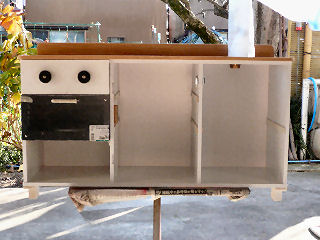
The counter half made.
The top plate, heat adjusting nobs(they can be turned by hand), the faucet and the oven assembled. The faucet is covered with plastic sheet to keep it from being scratched.-18/27-
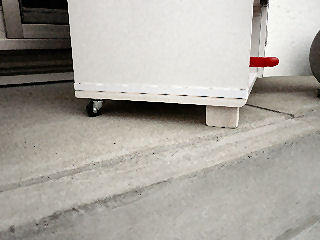
The hind legs are casters for movability
While the front legs are wood to make it settled at the spot. Legs are fixed on plates as assembly.The leg plates are necessary for metal fittings to be attached on which are fixed braces as shown below.
-19/27-
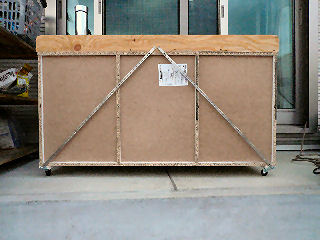
Ready-made color boxes are rickety to side ways.
With braces installed as shown in the photo the box becomes firm.The bottom ends of the braces are fixed to the ends of particle board with metal fittings. Without them particle board is too weak for resisting the stress on the braces.
-20/27-
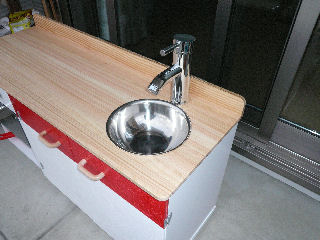
An upper sidelong view of the counter.
The faucet seems a bit too big but fortunately, the granddaughter didn't care at all.-21/27-
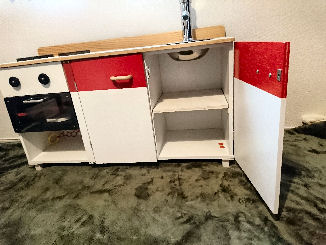
A veiw of the inside under the sink.
There are three shelves behind the other door.-22/27-
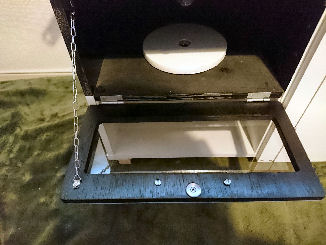
A view of the inside of the oven.
The rotor is manually rotatable.To the lid is installed a chain to stop it from being opened too far. Otherwise, the hinges will be broken.
As an injury proof, the four corners of the lid are made round. I did the work after I delivered the counter. It should have been done before painting while making it.
-23/27-
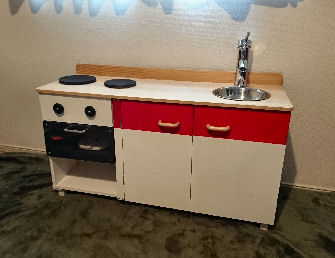
The counter after it was delivered
to our granddaughter's house.-27の24-
Postscript
I barely managed to deliver it on Christmas Eve. To meet the deadline, I had to work later in two evenings in a hurry and it begot some failures.1. I forgot to load shelf boards in the car when I loaded the counter on board.
2. I didn't work on the corners of the lid and doors to make them round before delivering.
3. I had to change the design of the left door and its fixing. Original design turned out that the door and the oven lid interfere each other. I had to add a sub fixing plate.
4. As I hurried the painting of the sub fixing plate, I couldn't paint it beautifully. The red portion should have been painted after the whole plate was painted white as I did it with the doors.
5. I forgot taking photos of some processes.
-25/27-
Chief parts list
| colored box W:420 D:29 H88.5 YamazenThree Shelves White GCB-3 ¥2000(carriage included) | faucet A-Omega copper pyrites electro plated combination faucet X000CTC51L ¥2160(carriage included) | stainless bowl 200mm¥480 | glued laminated timber ¥1380 | |
| prywood 900*1800*12 | color spray white@ ¥848*3 | color spray red ¥748 | color spray black ¥748 | rubber caster 25mm ¥88×2 |
| magnet catch ¥238×1, ¥98×2 | hinge ¥128×3 | door handle chrome¥190、wooden ¥180×2 | acrylic board transparent SS 1.5mm ¥448 | |
-26/27-
